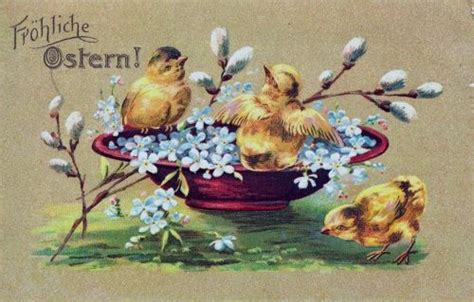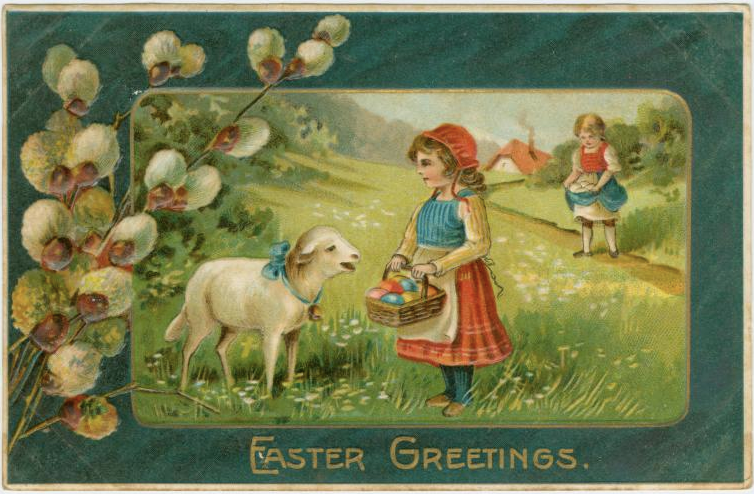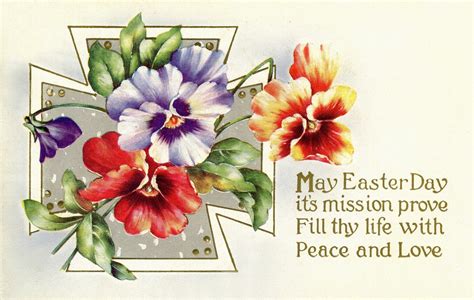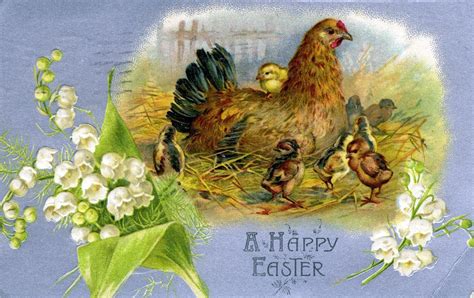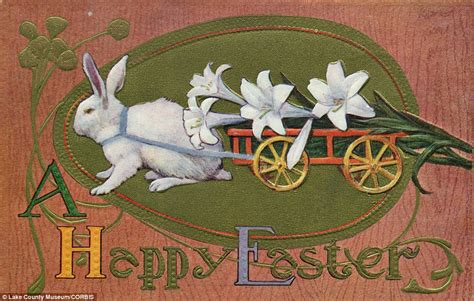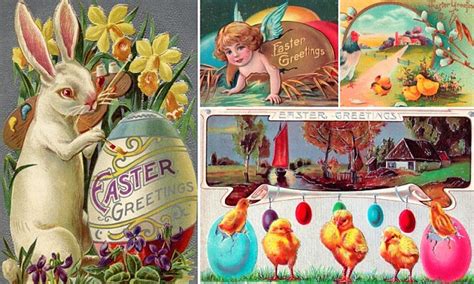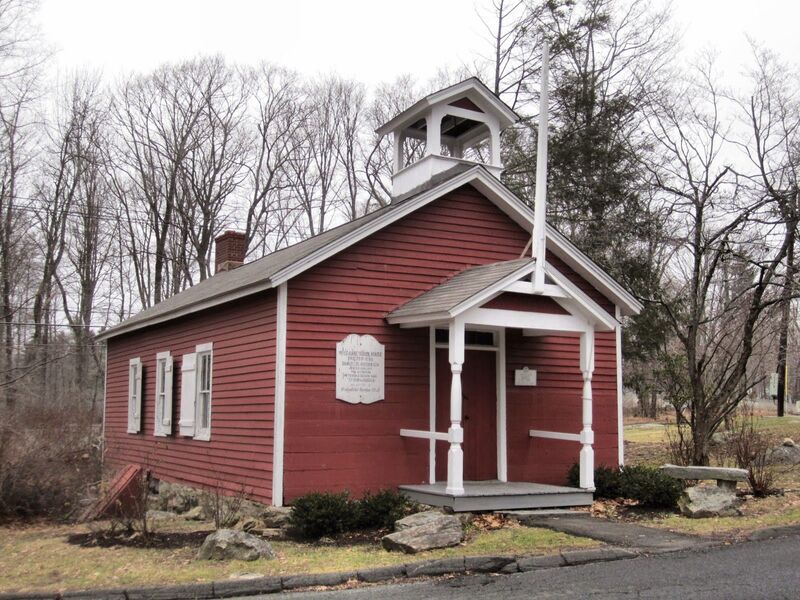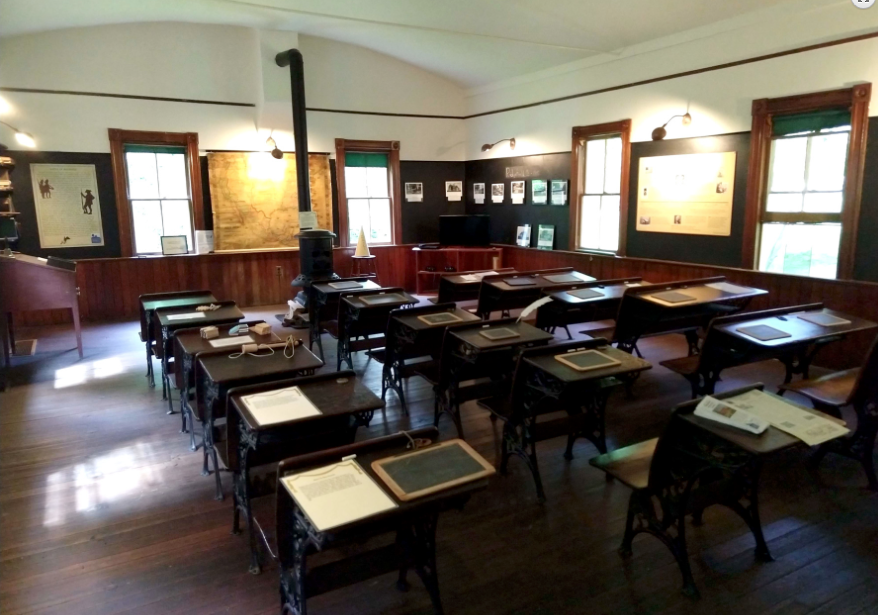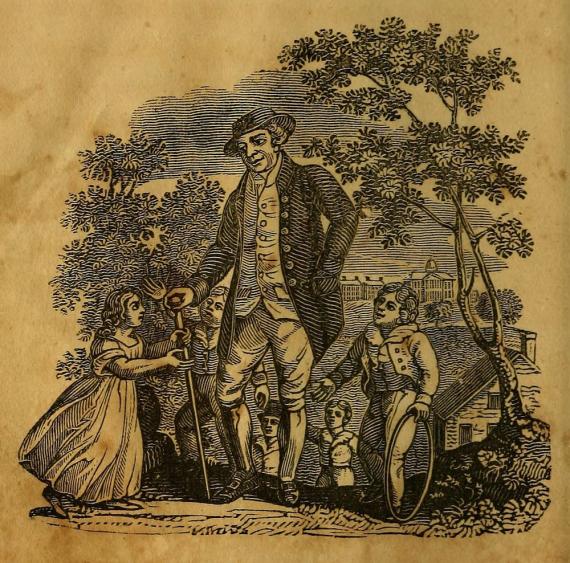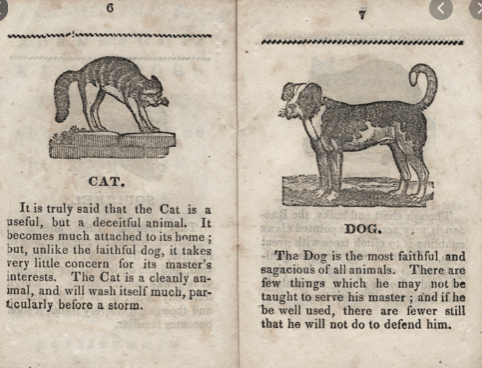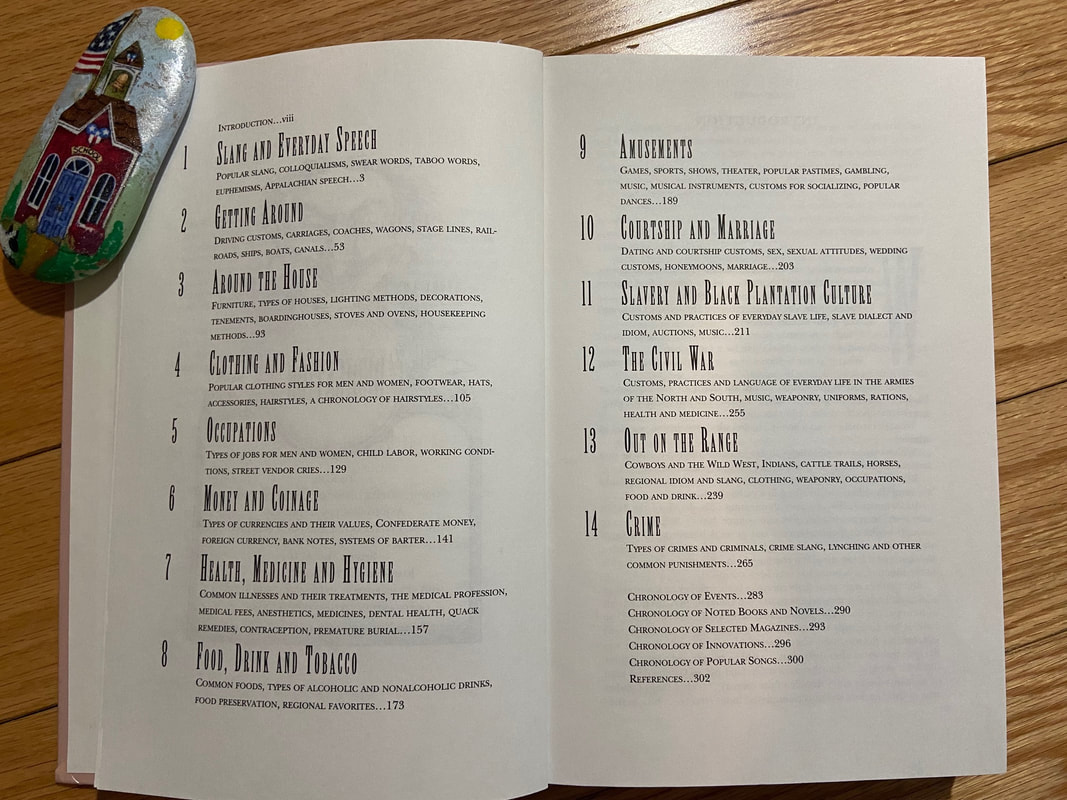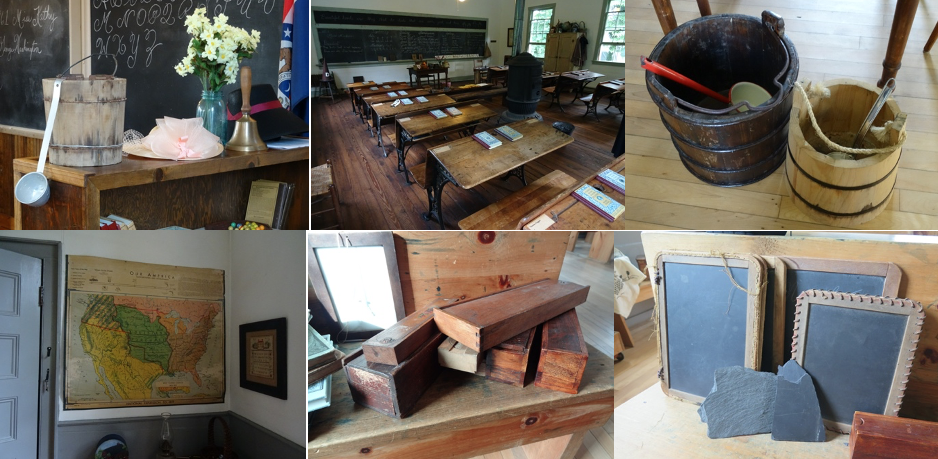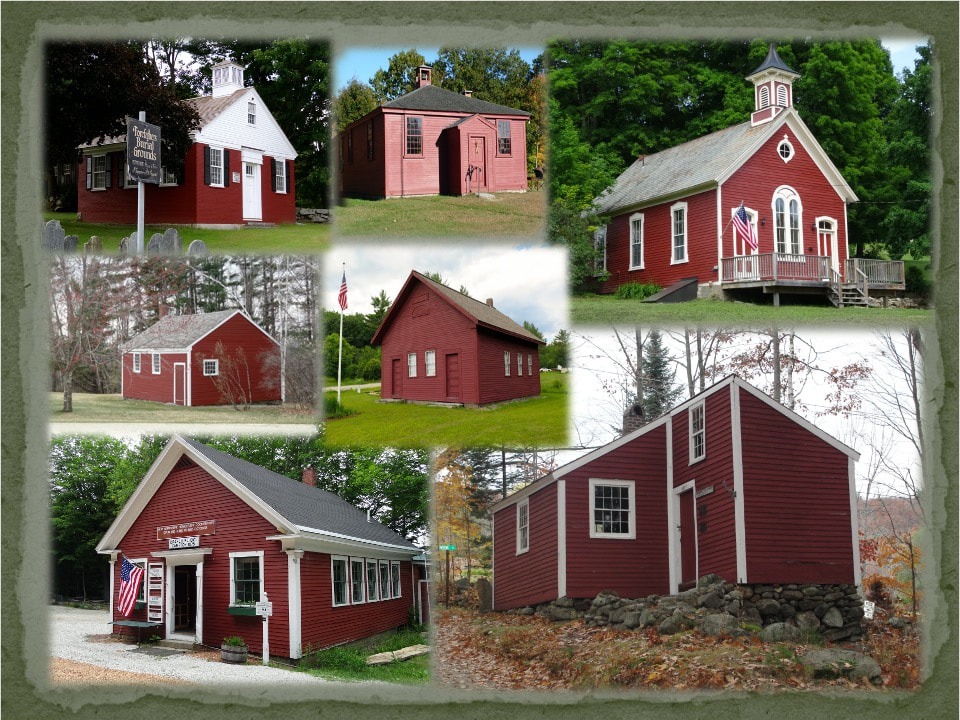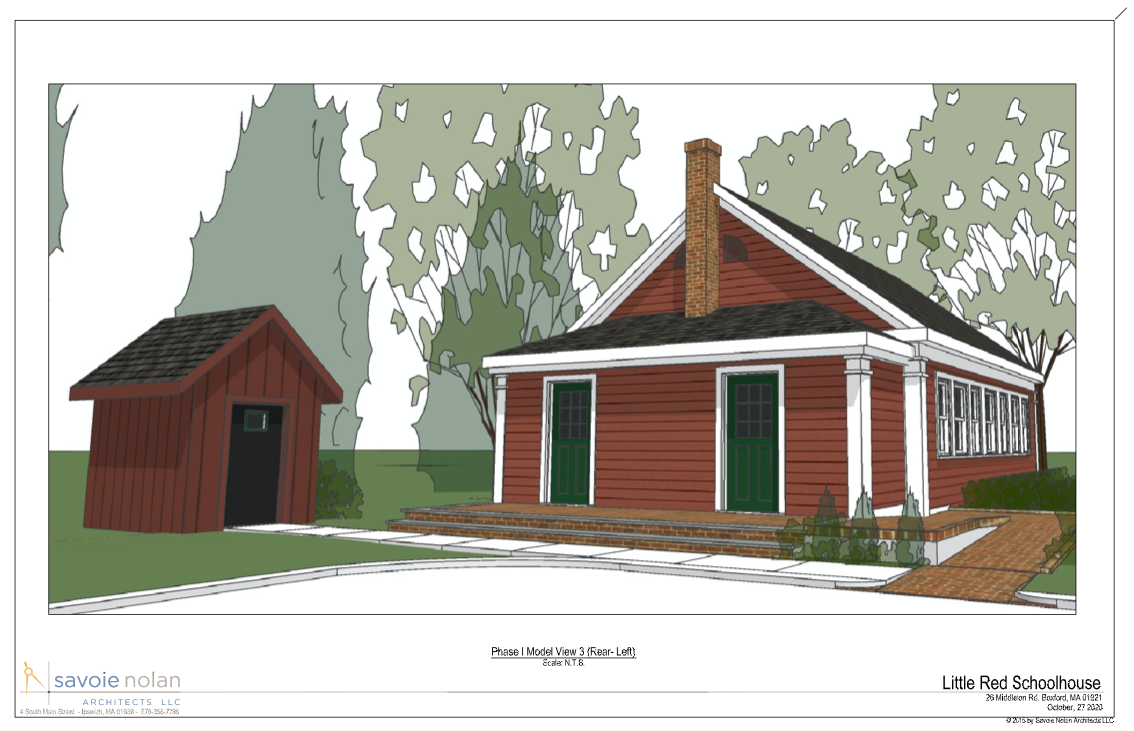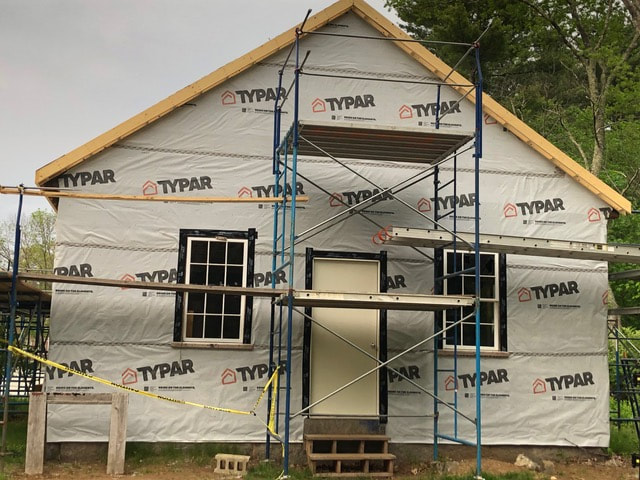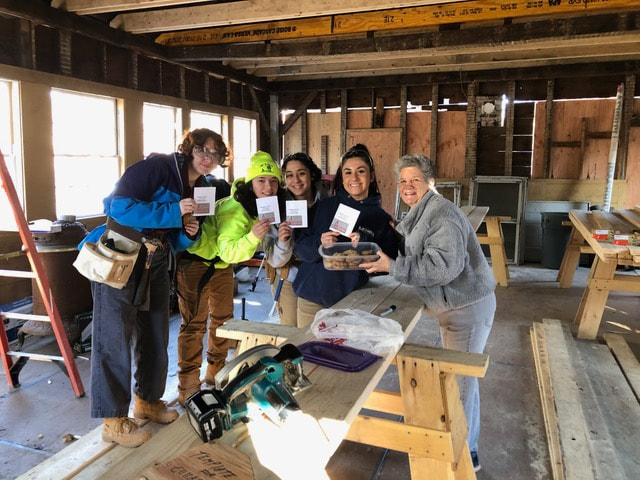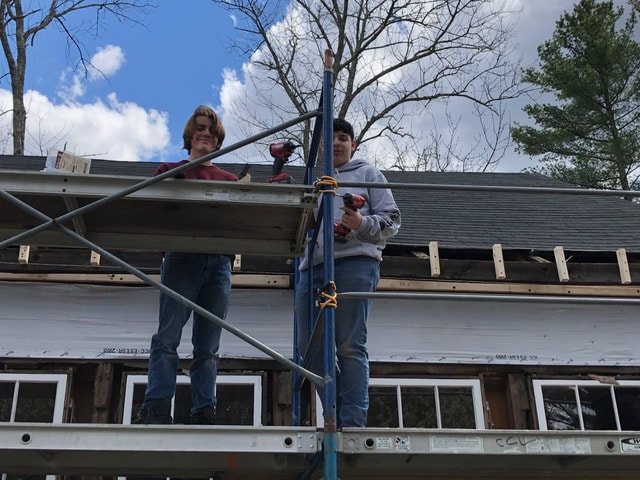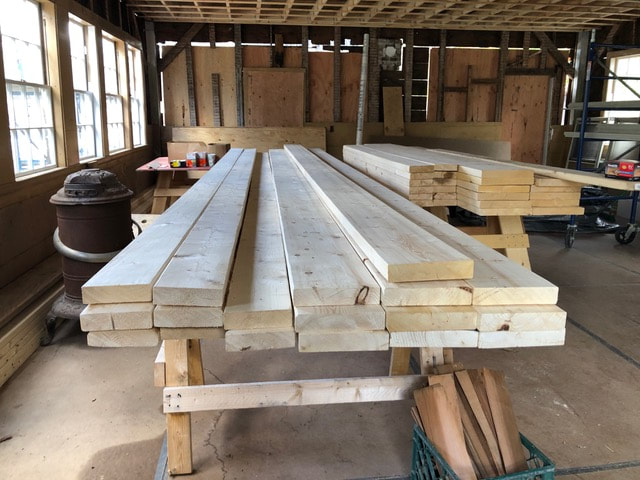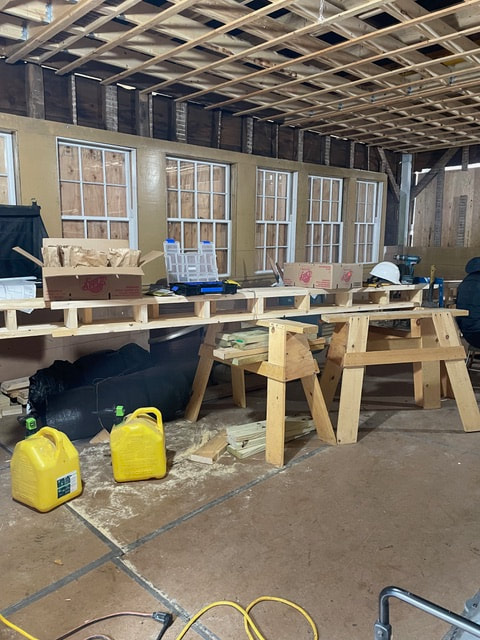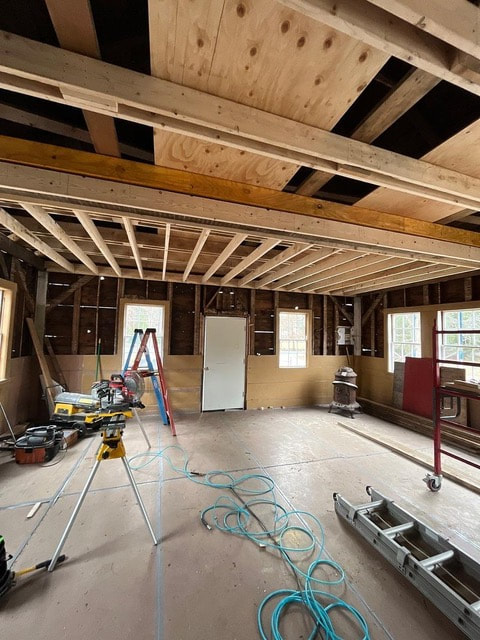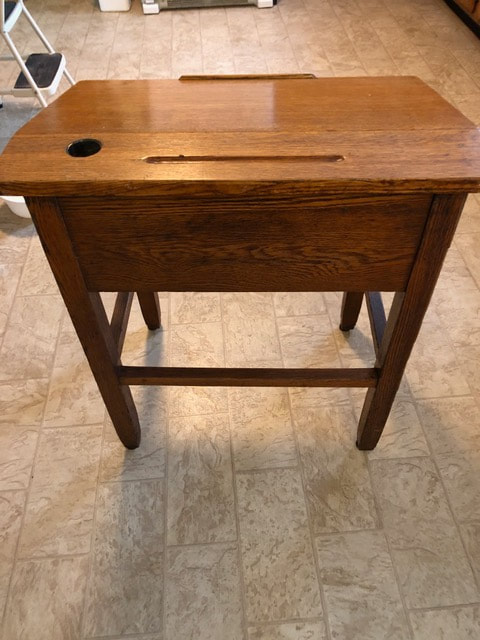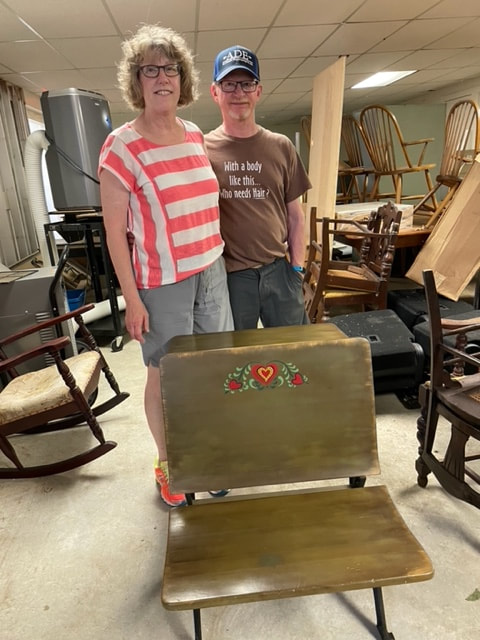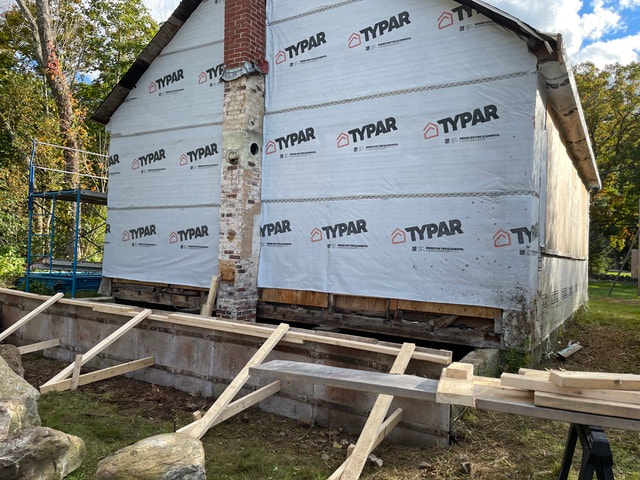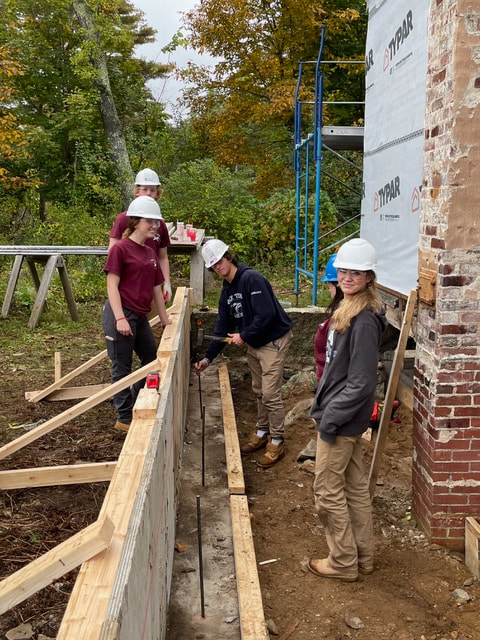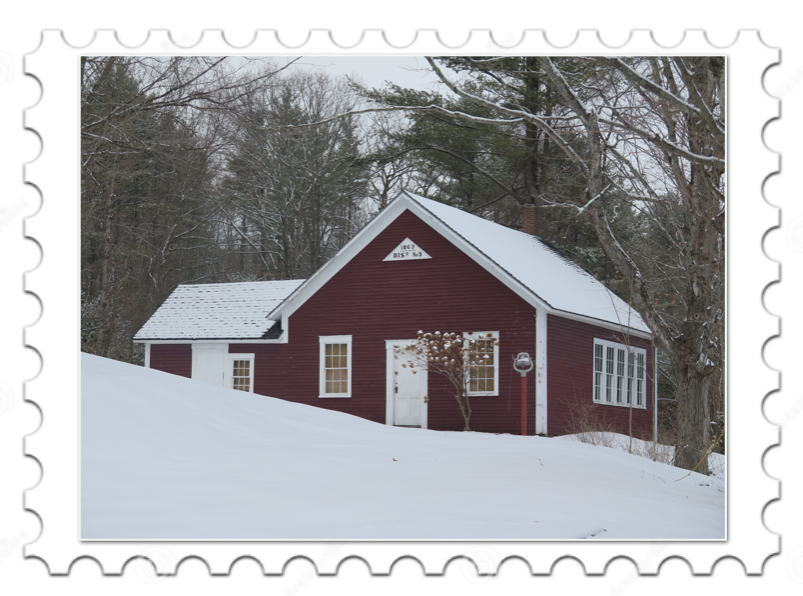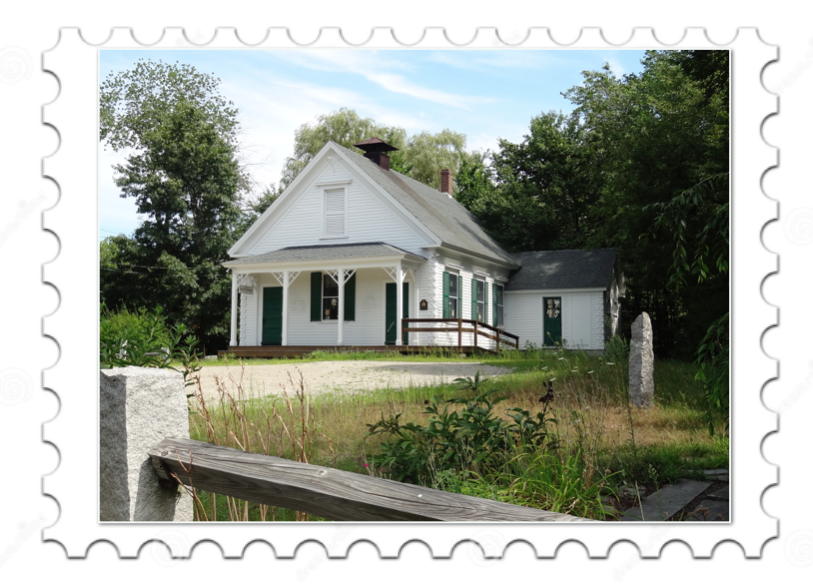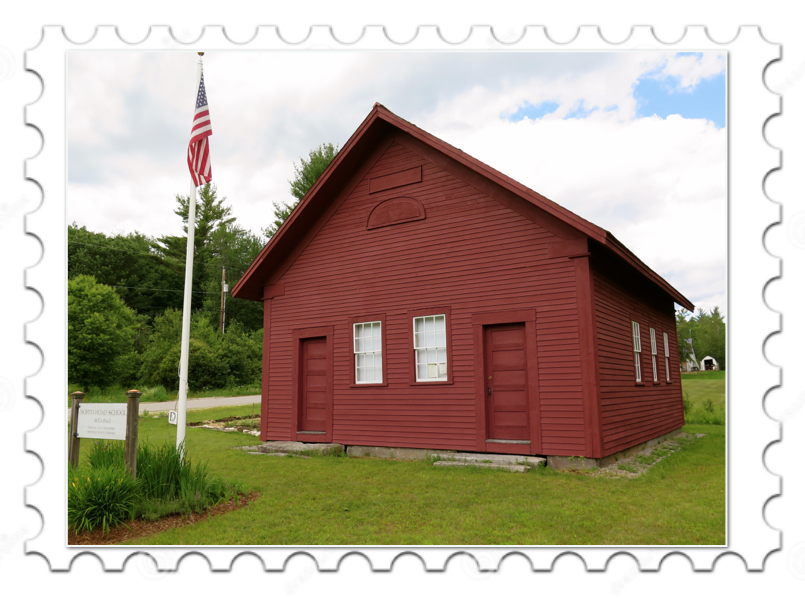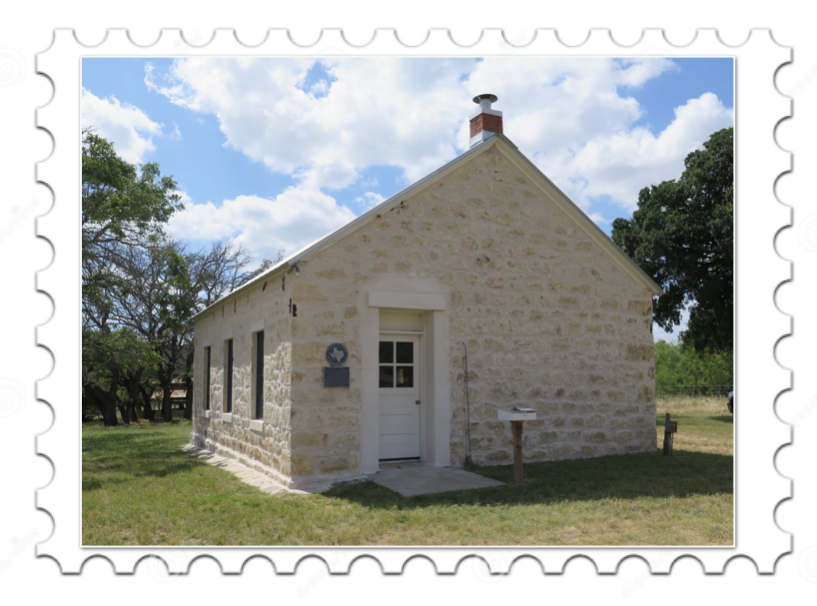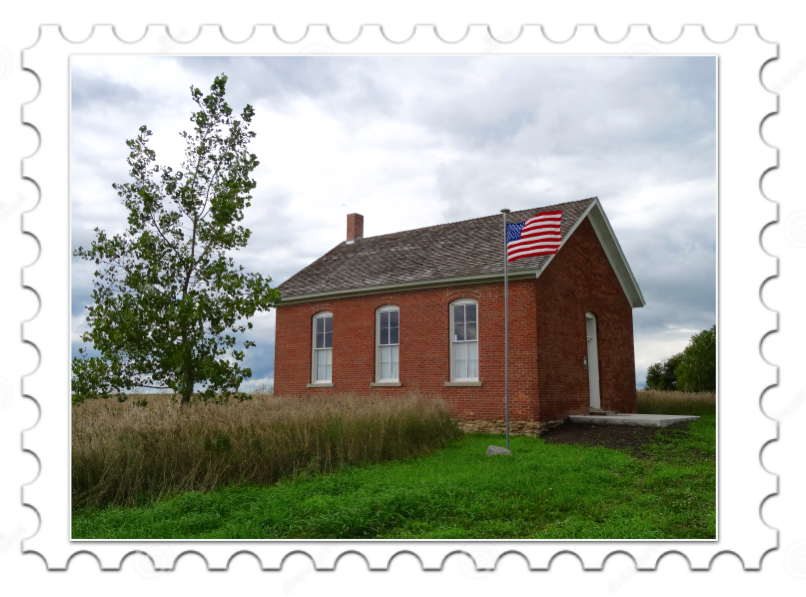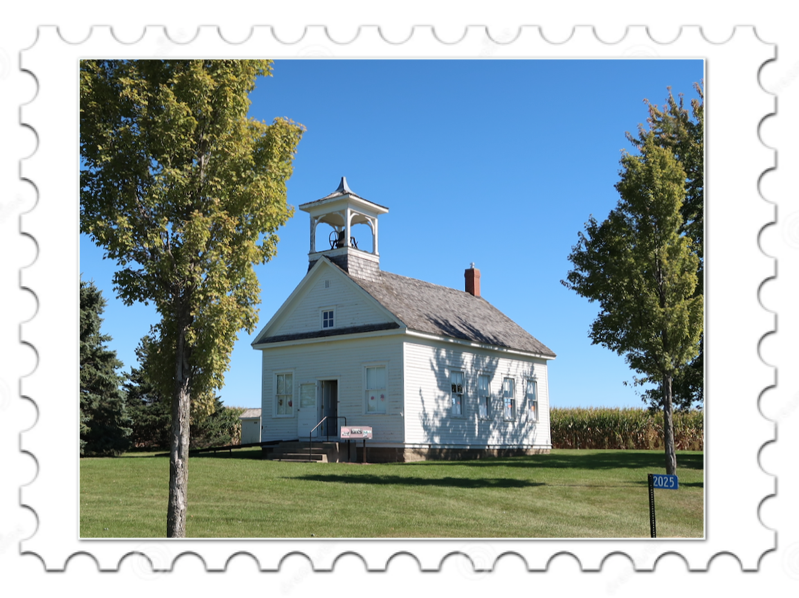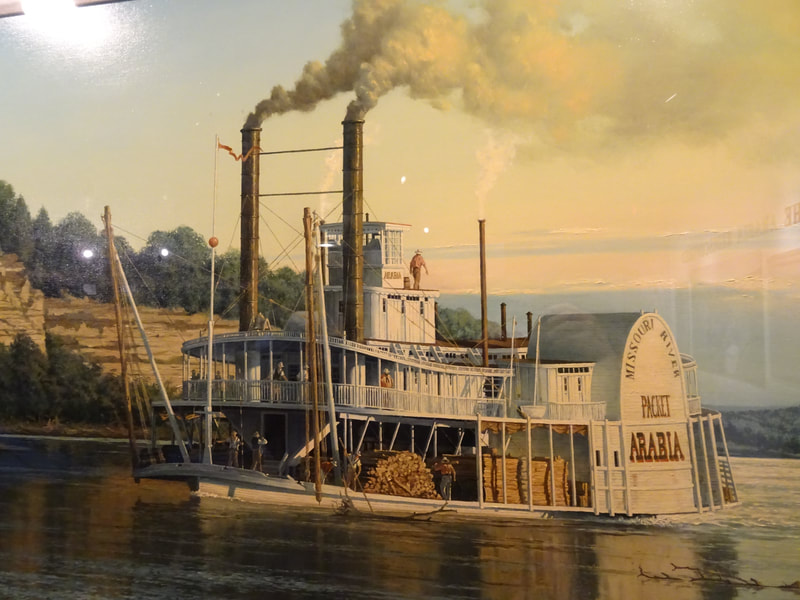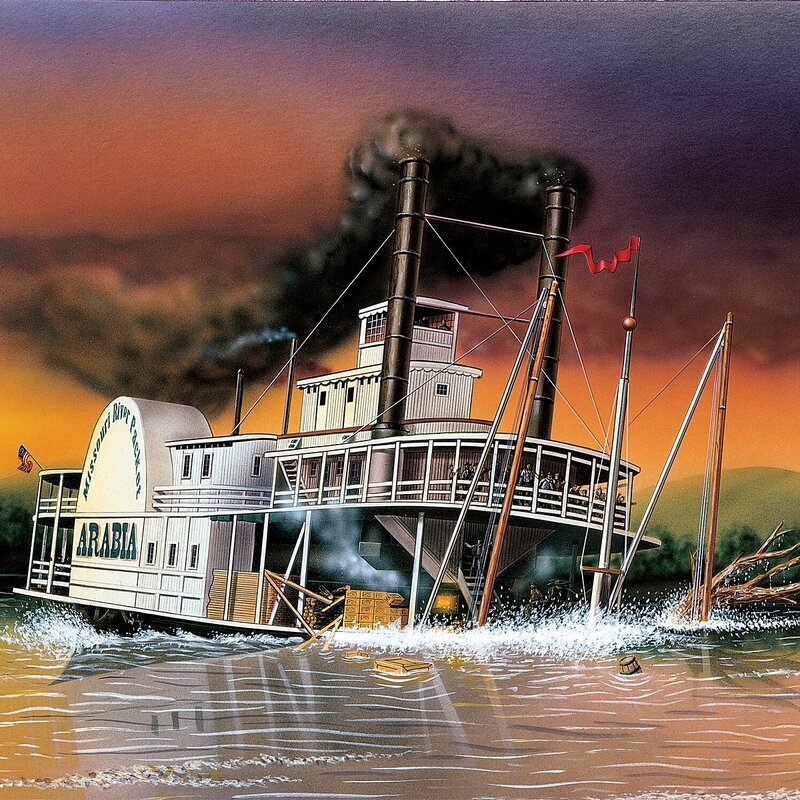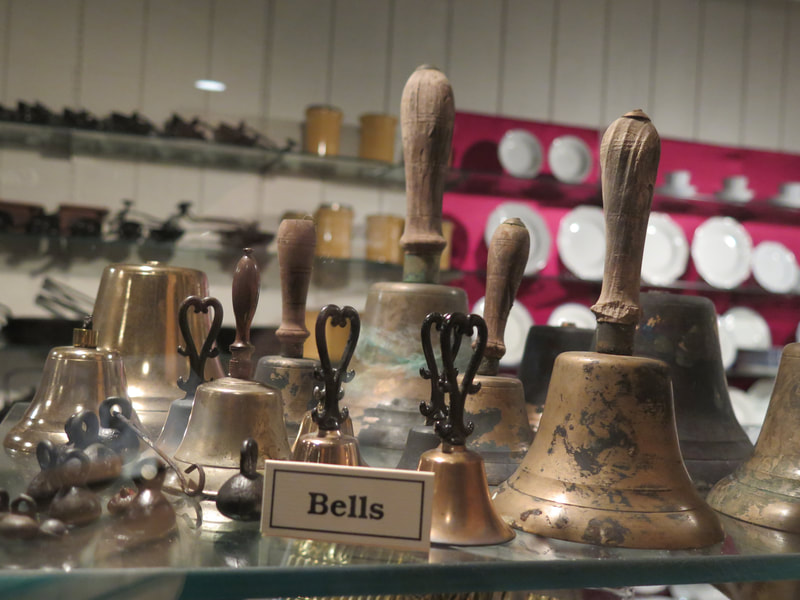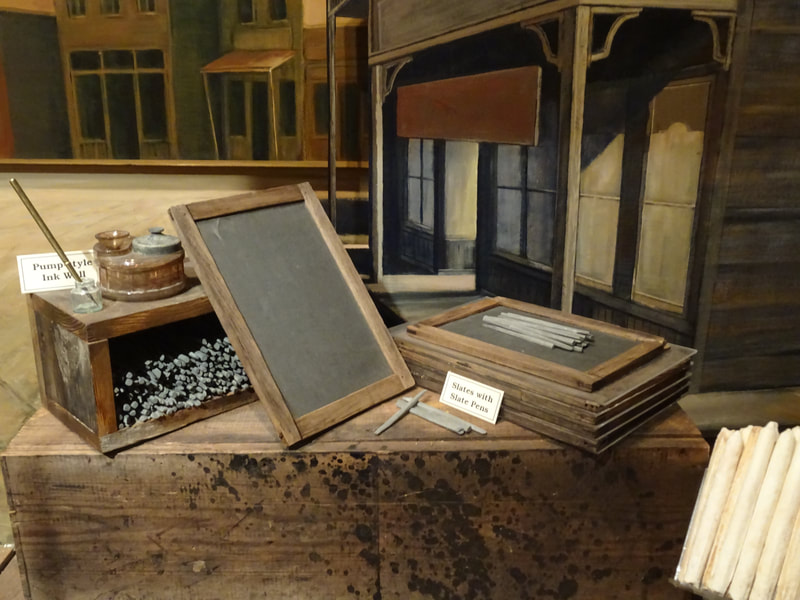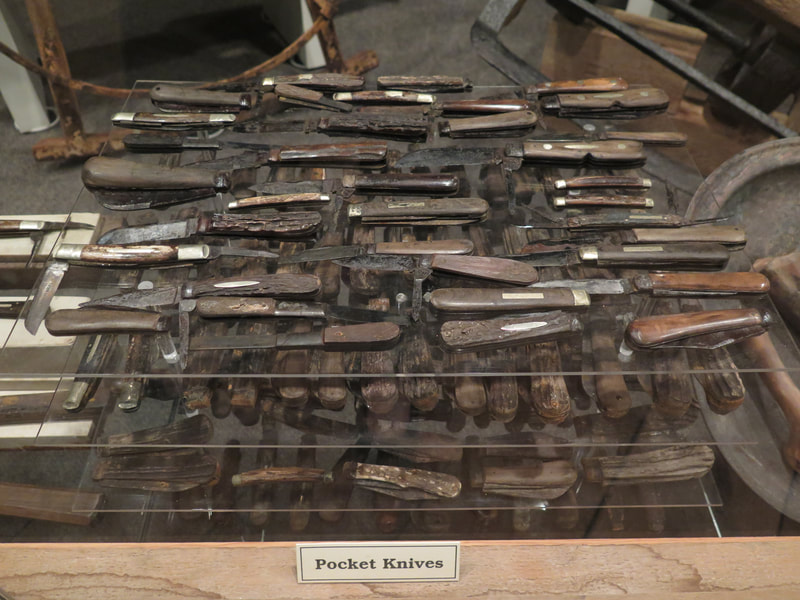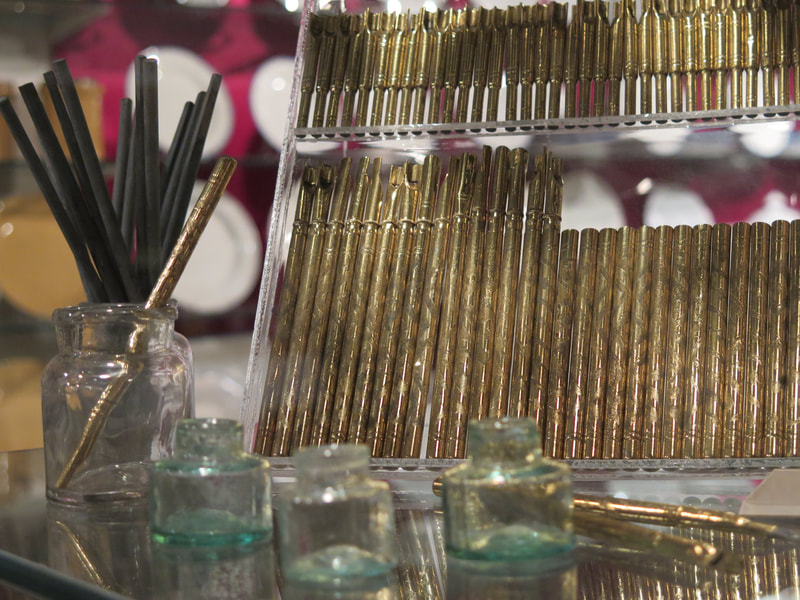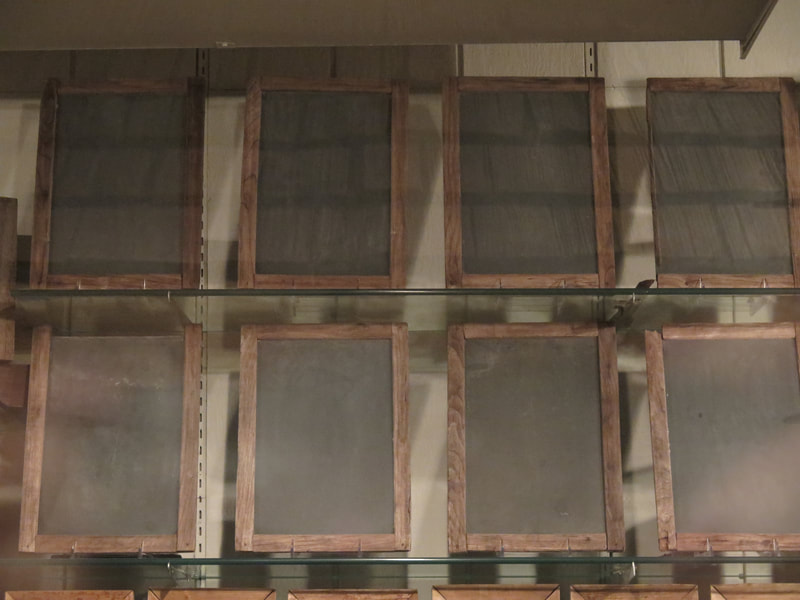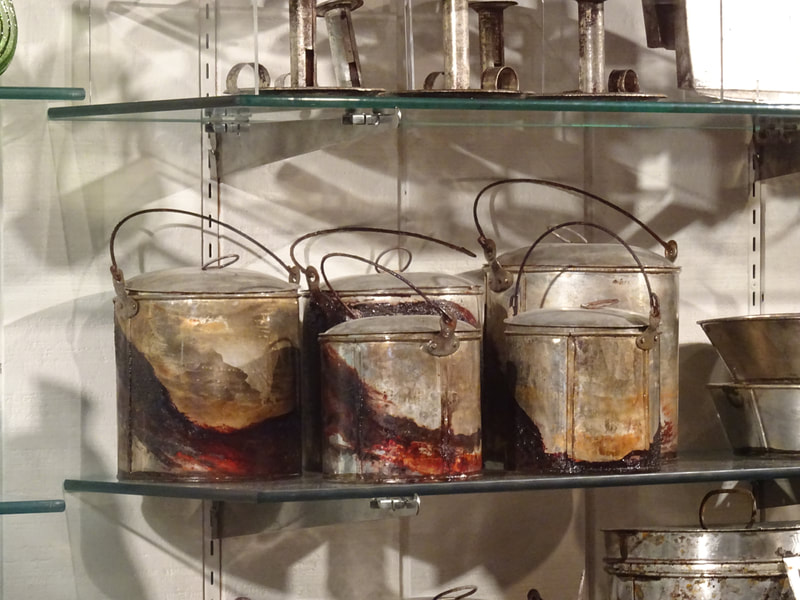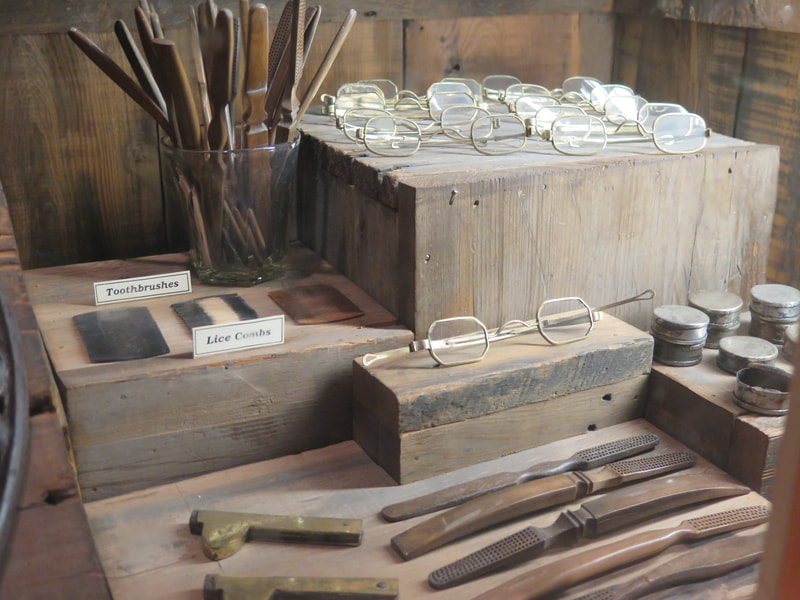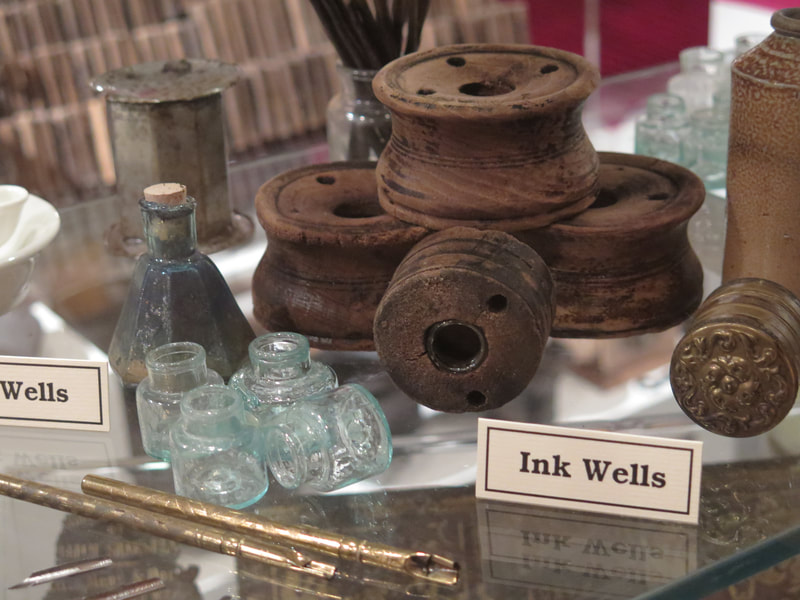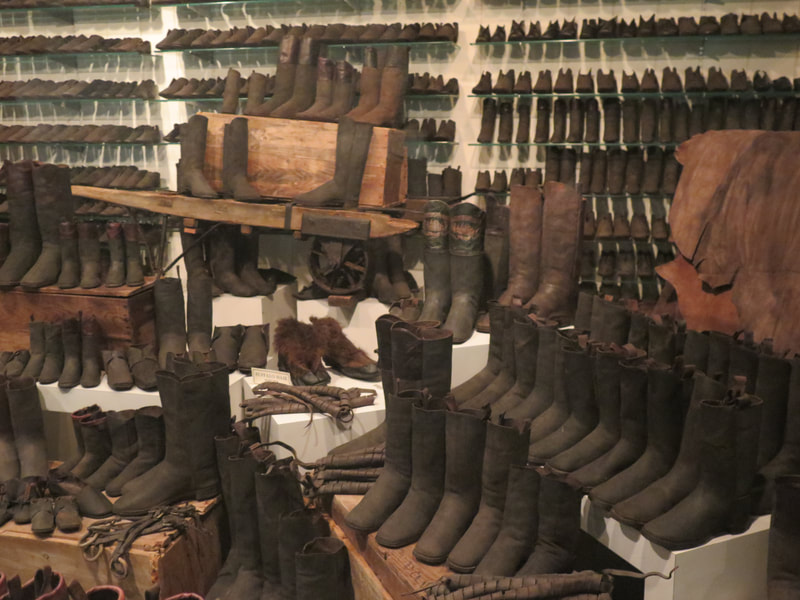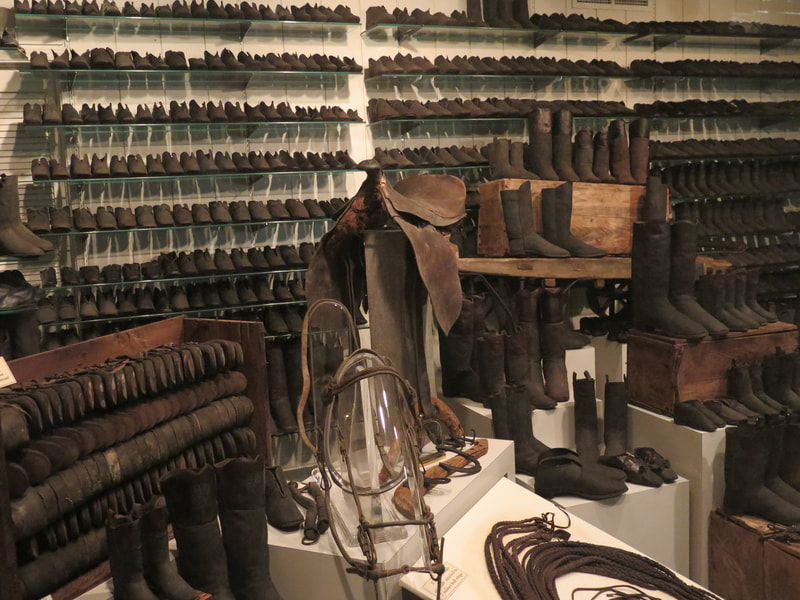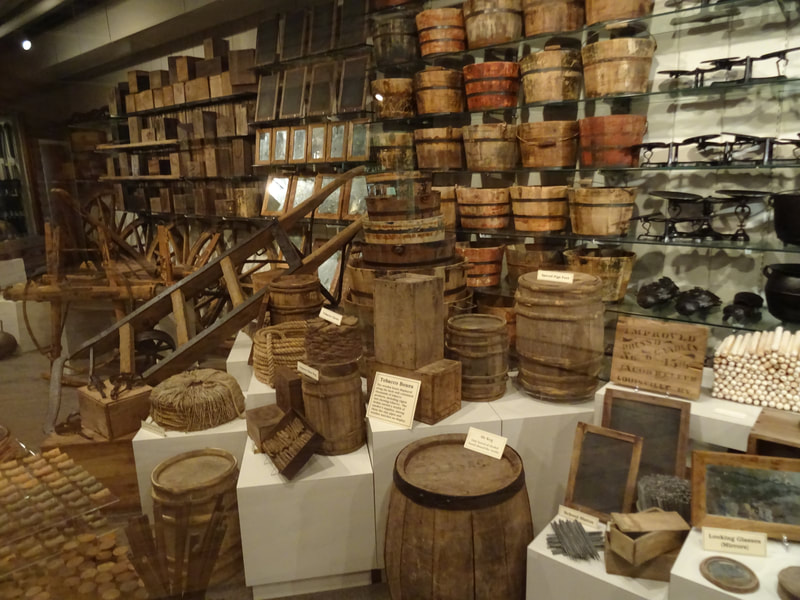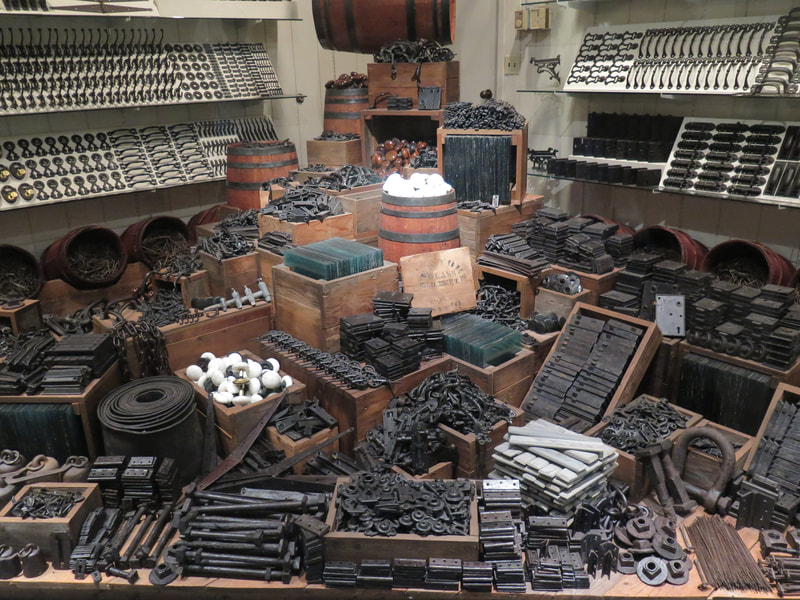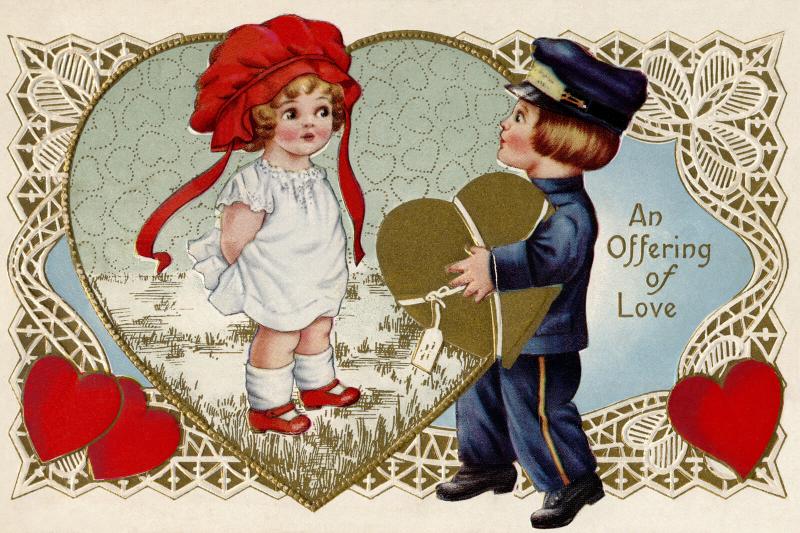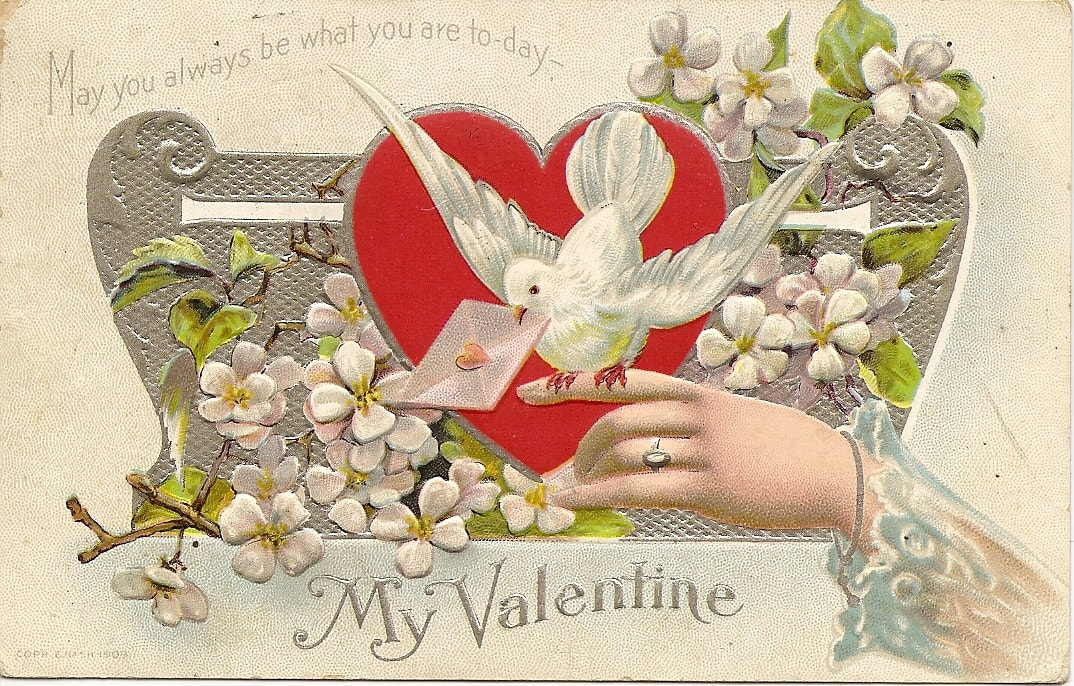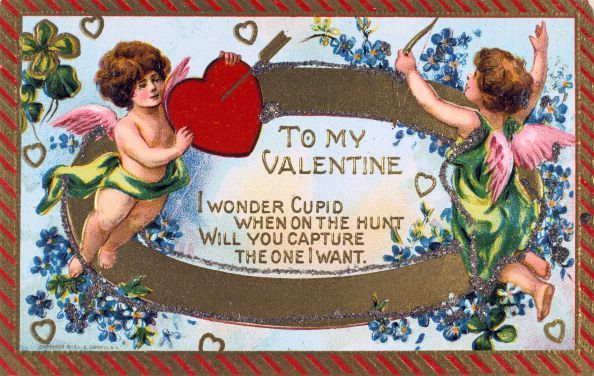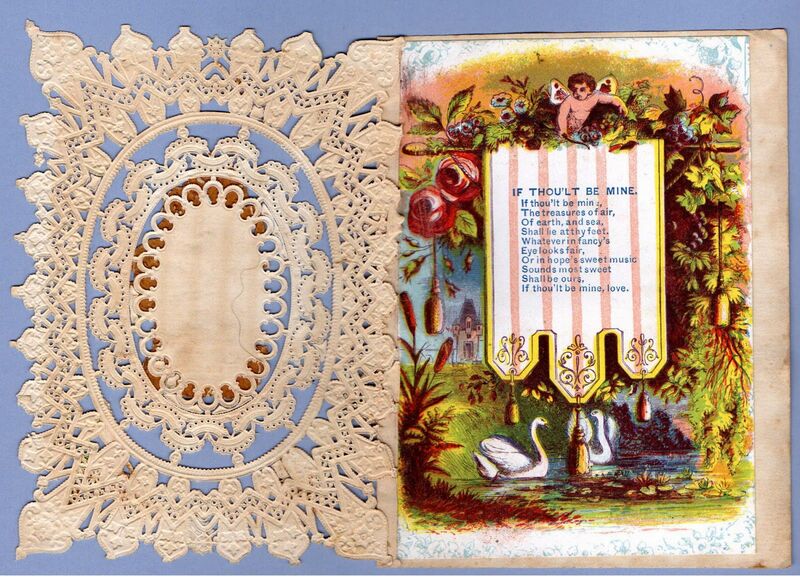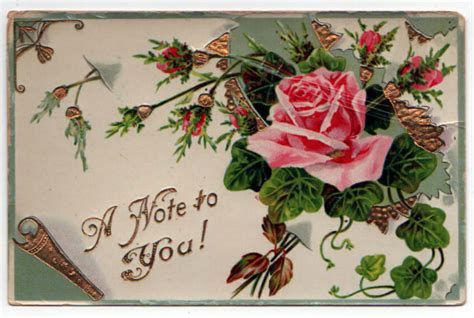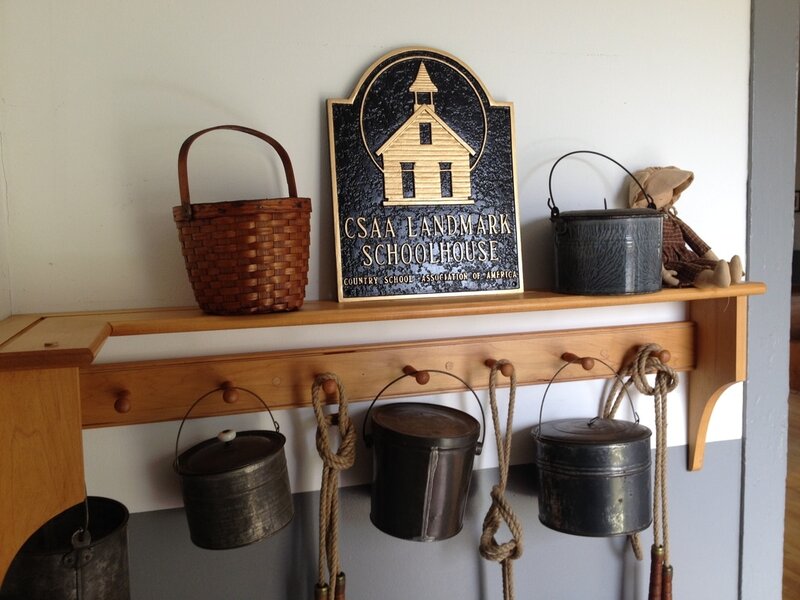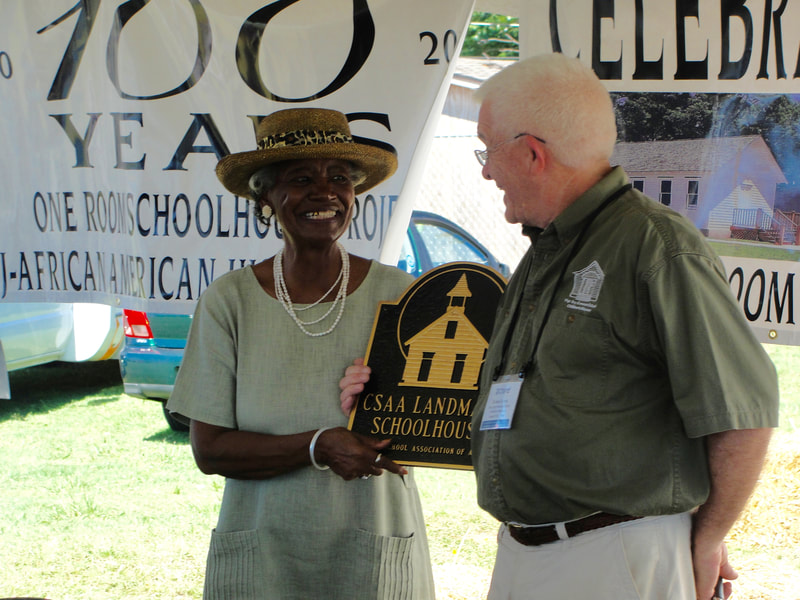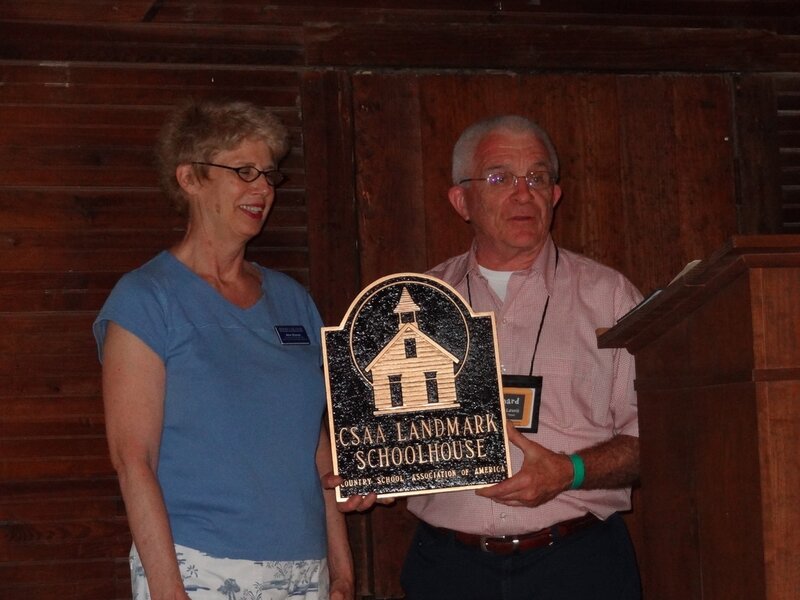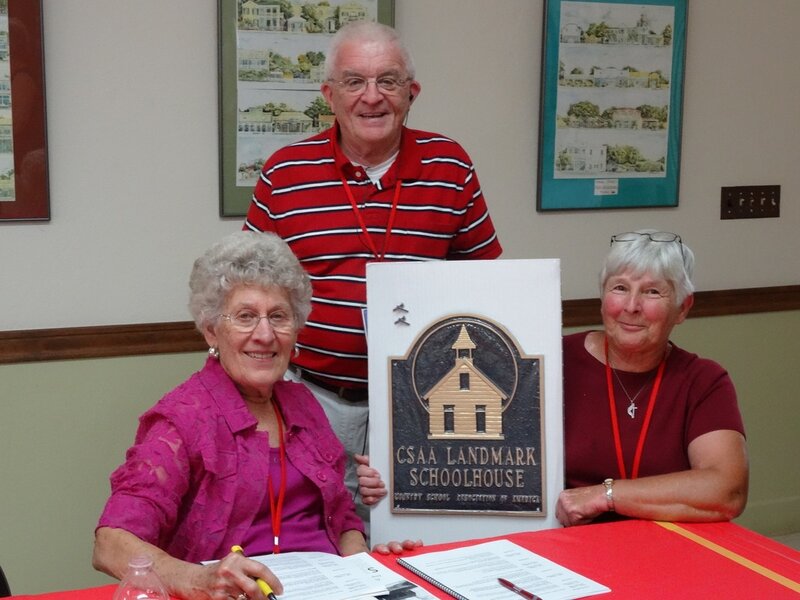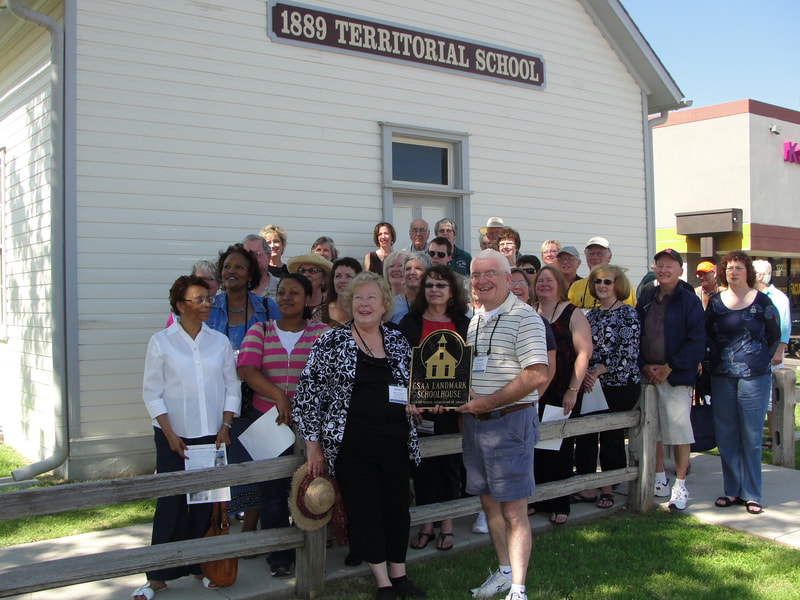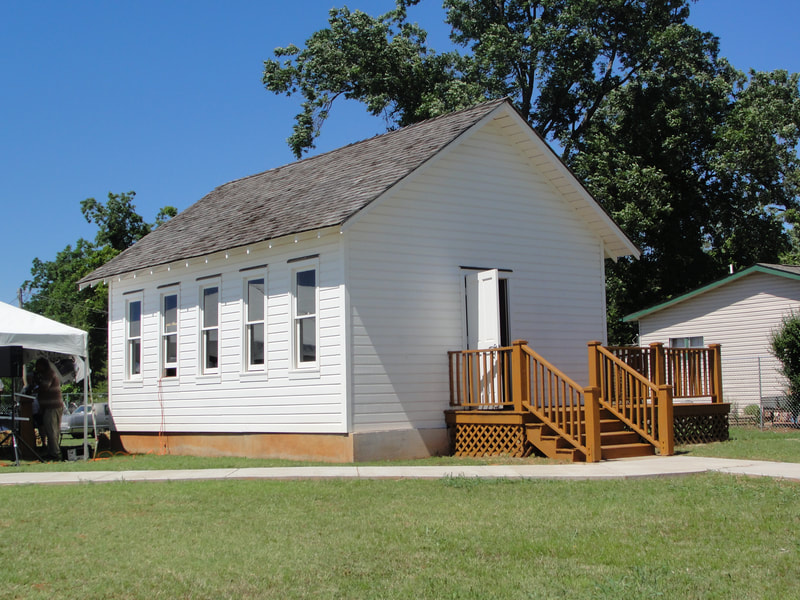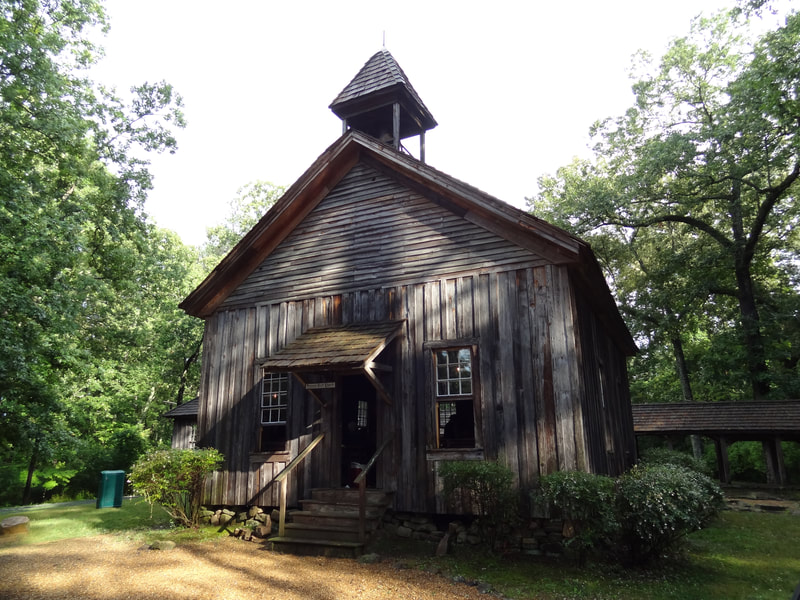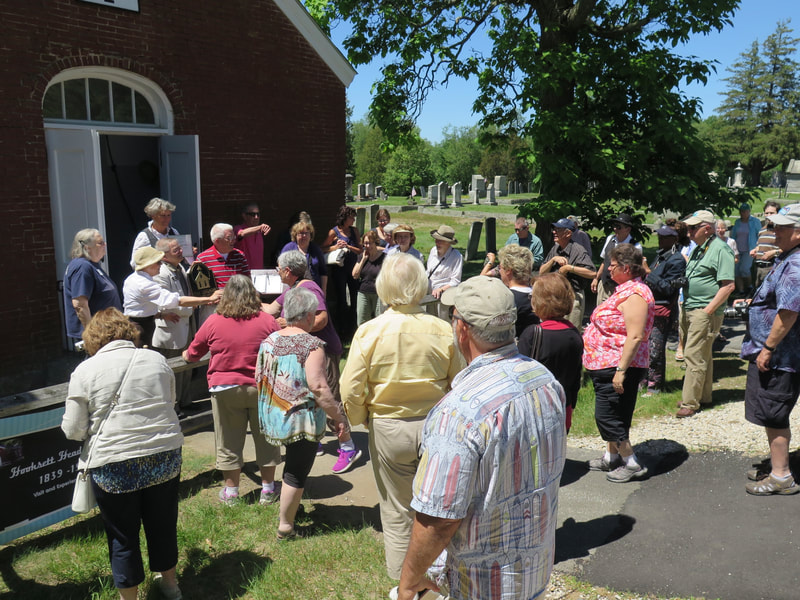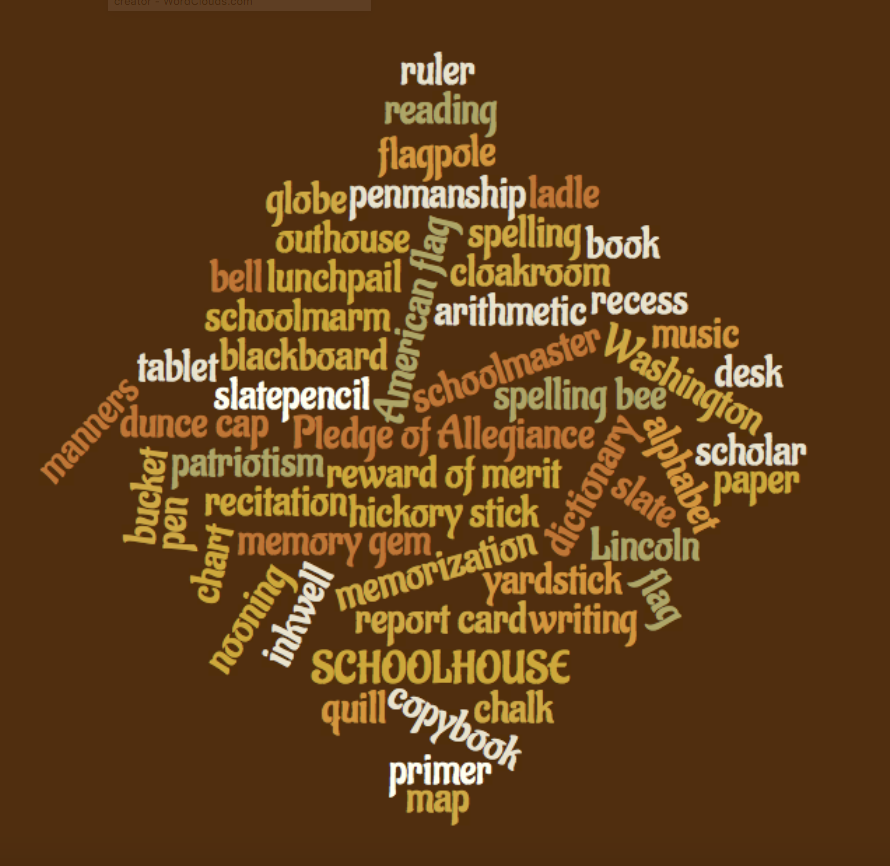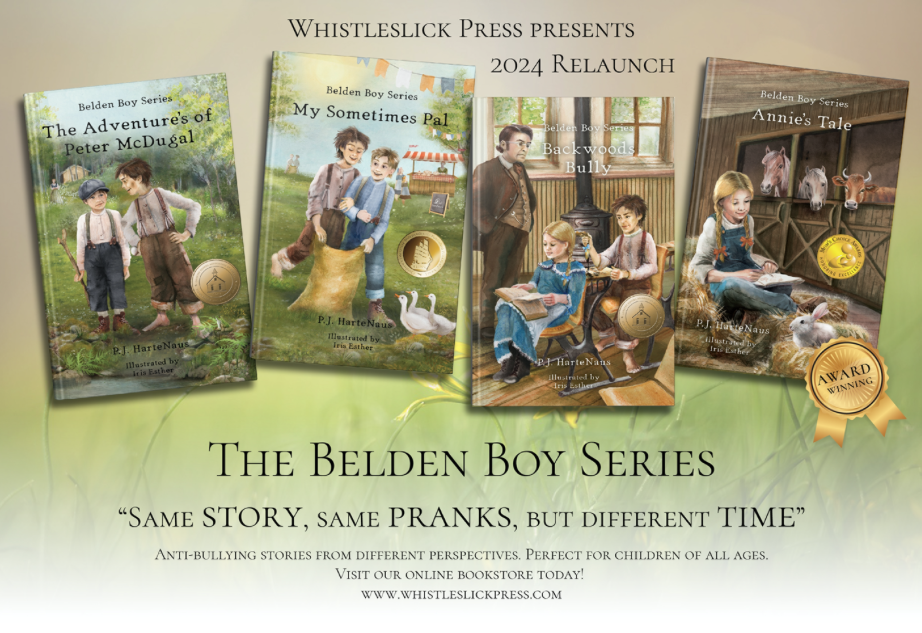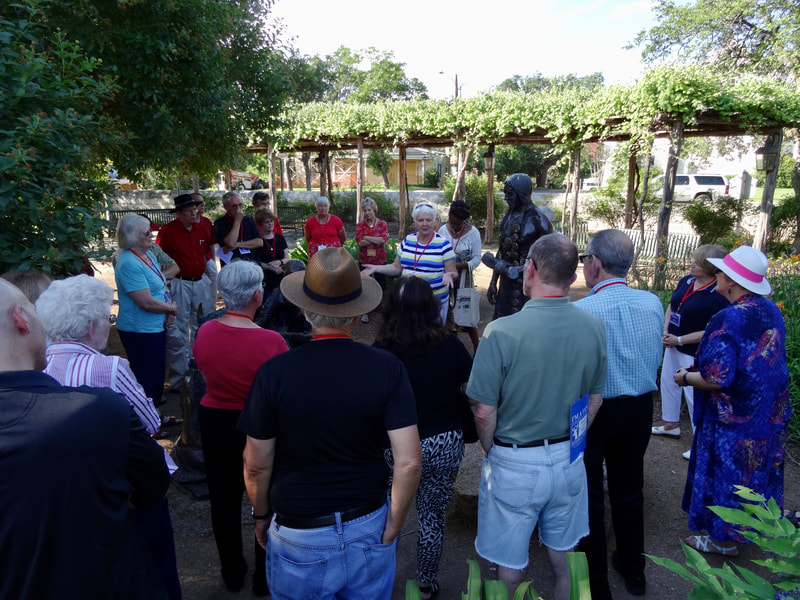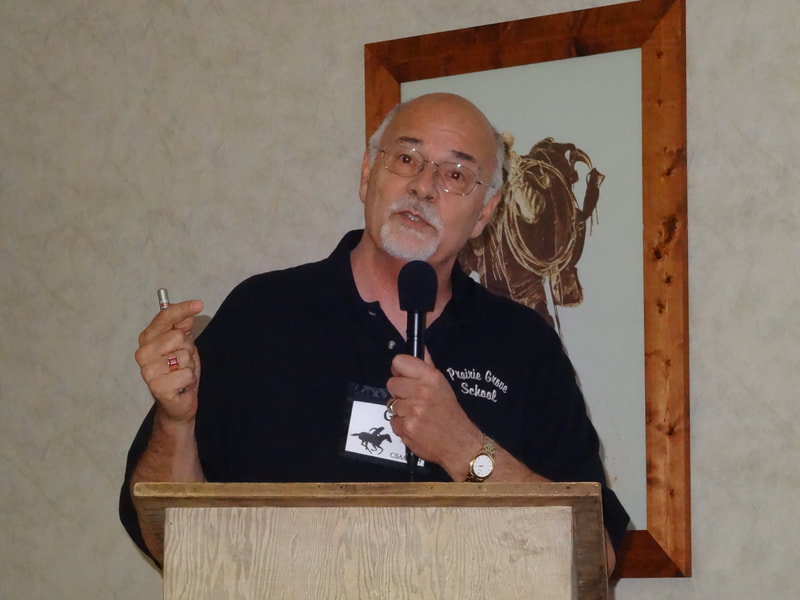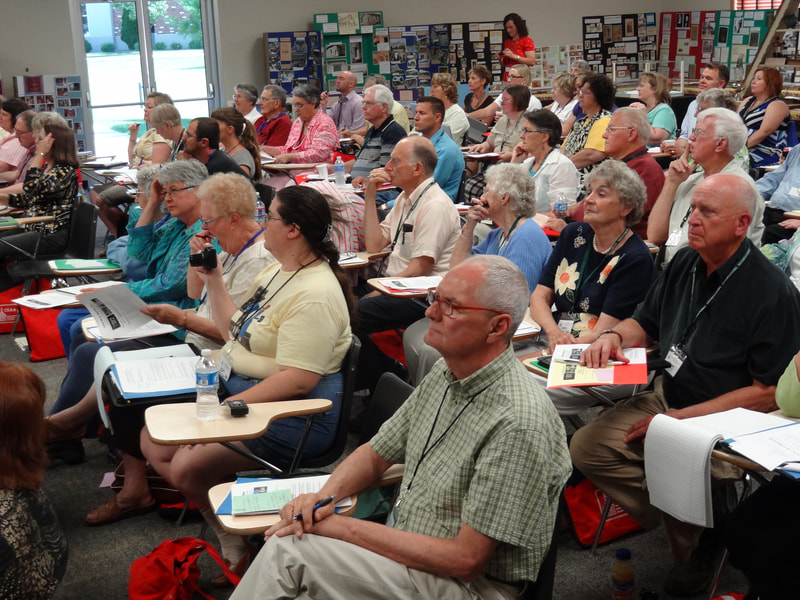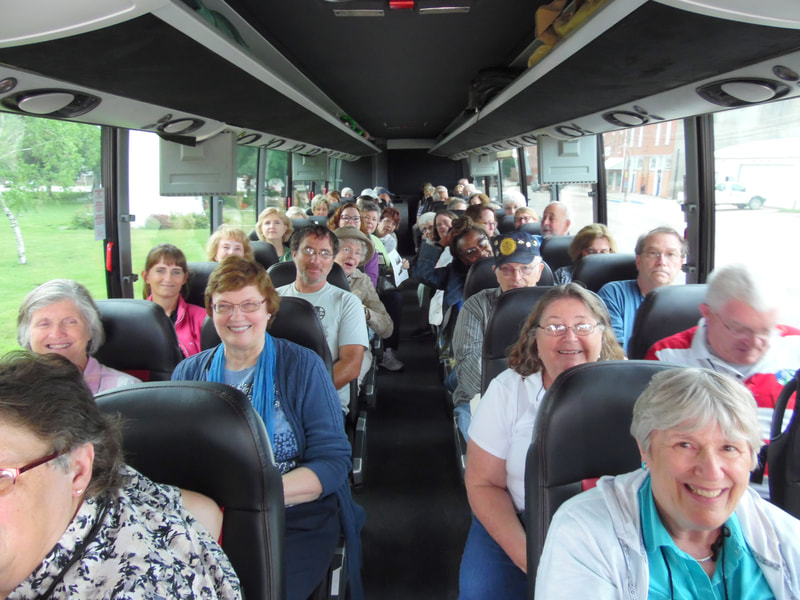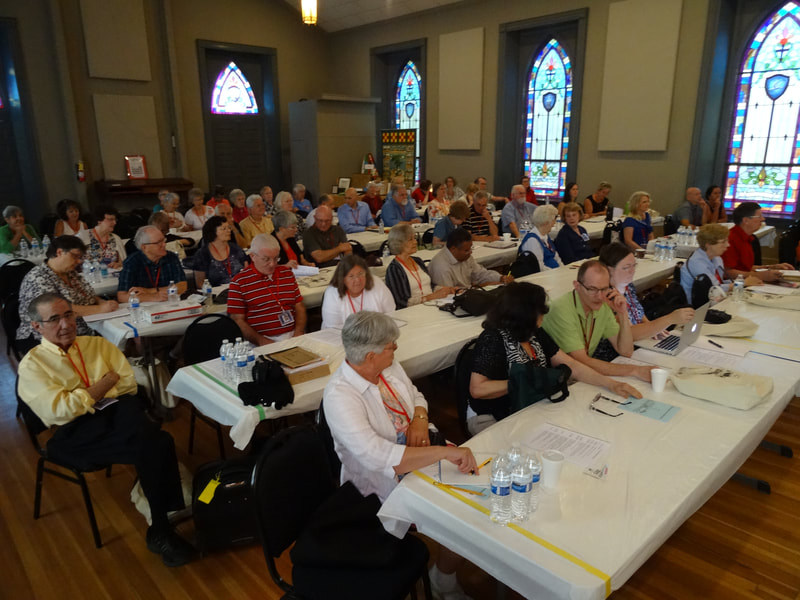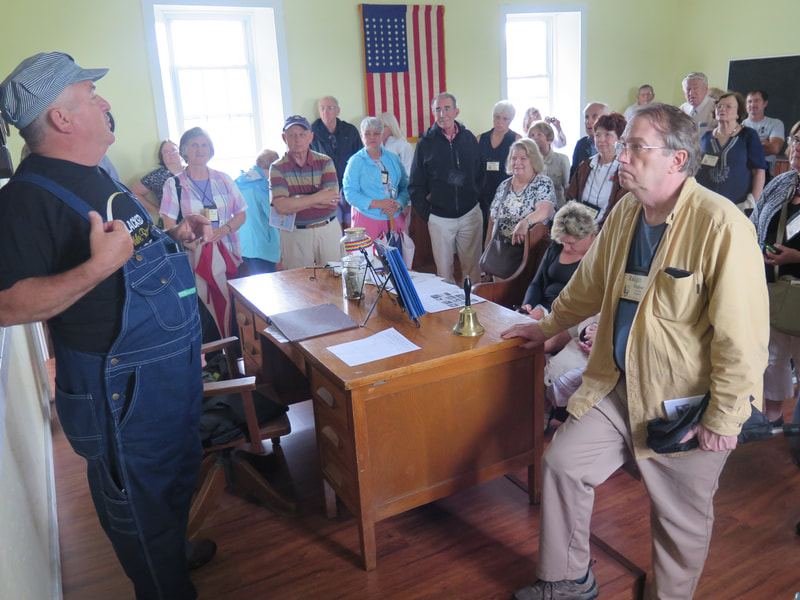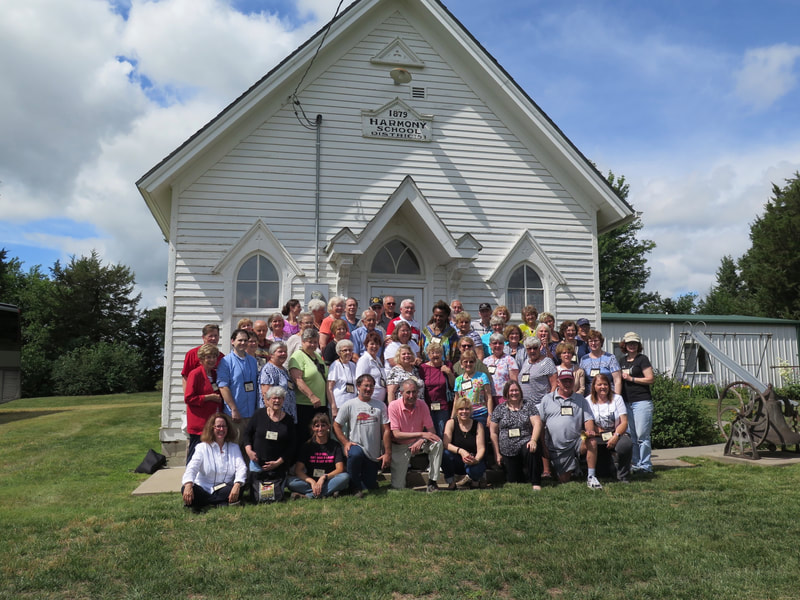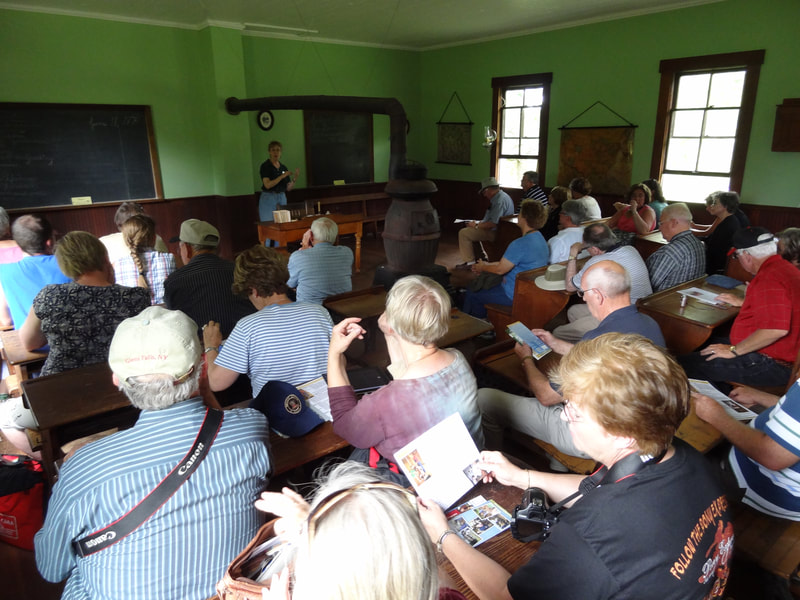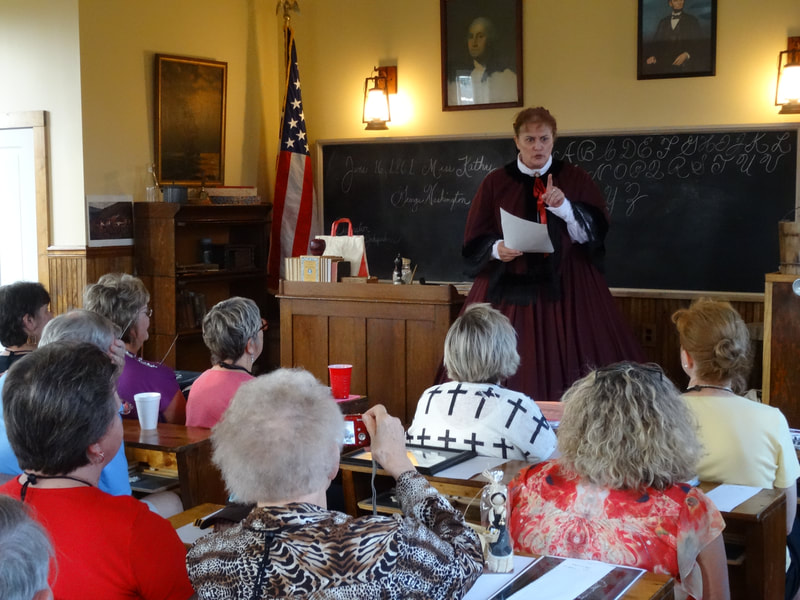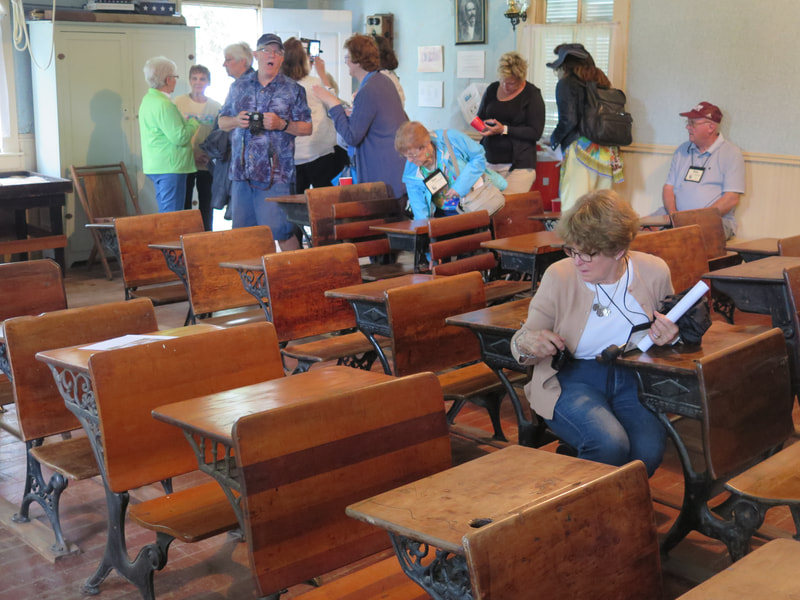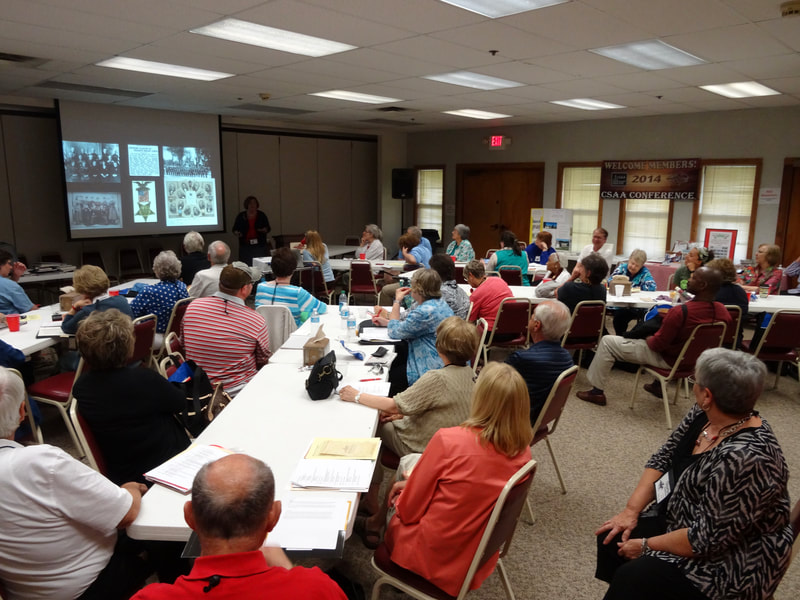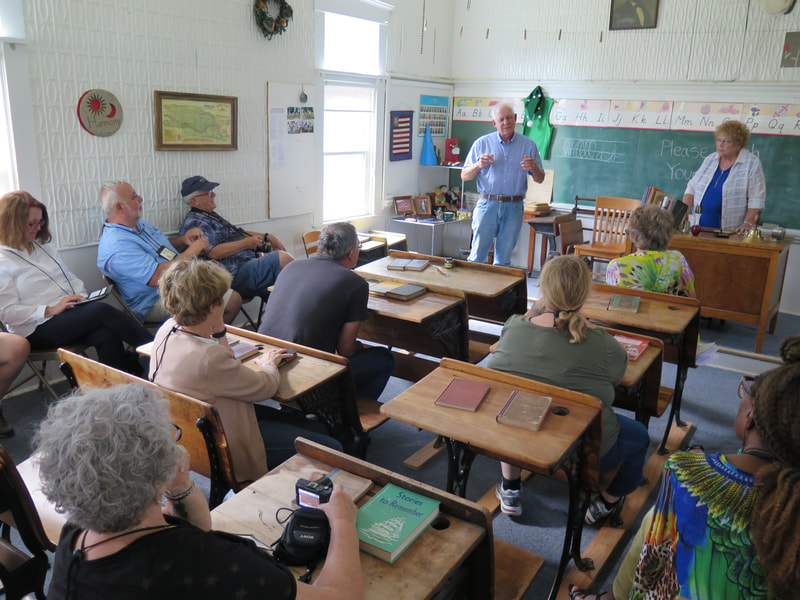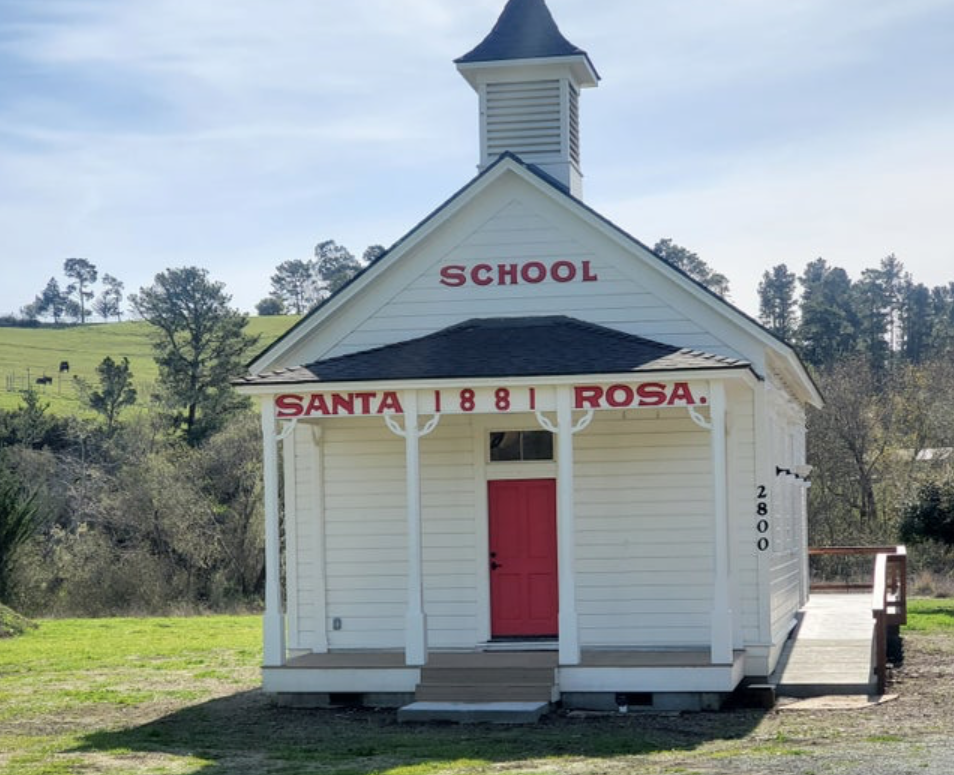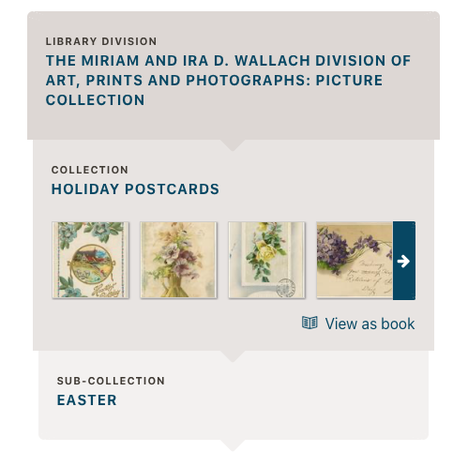 Happy Easter...Antique Cards Digitized! Many of us collect Reward of Merit Cards, those quaint little gift cards teachers awarded to students for their fine schoolwork. We often find them tucked among the ephemera in antique stores and marvel at the Spencerian script of the teachers who spent their own pennies to acknowledge the dedication of their scholars with hand-written praise. Thumbing through postcards and old photos you may also come across a collection of early 2oth century Easter cards, more prevalent than you might think. Even then people related Easter with bunnies, flowers, chicks, candy, and eggs as the artwork shows. So when and why did these symbols of Easter emerge? Some surprising information below! Not to reinvent the wheel here, it's better if I can point you to two fascinating resources that are both visual and informational. Digital Easter Cards 1. The first link is a set of 270 digital scans of early Easter cards, some with rhyme, from the New York Public Library Digital Collections. Click on the gray image above to access card collection. Scroll down to where you see the image above and click on: "View as book.." Use the forward arrows in the right lower corner to view all 270 cards. Have fun! Symbols and Traditions of Easter 2. An article from the History Channel March 19, 2024 (second printing) that explains the where, when, and why these Easter symbols and traditions emerged. They encourage SHARING! Here's the direct link: https://www.history.com/topics/holidays/easter-symbols BTW...Happy Easter!
0 Comments
Samuel Griswold Goodrich, 19th Century Author Information from: Boston Public Library, Rare Books & Manuscripts, University of Washington Digital Collections In Ridgefield, CT stands the classic Little Red Schoolhouse known as the Peter Parley Schoolhouse, named in honor of its most famous student Samuel Griswold Goodrich. How is that you might ask? Samuel was born in Ridgefield, Connecticut, the 6th of ten children, the son of a minister, in 1793. He would attend this “Lane Street School” from 1799-1803. You may already be familiar with Pater Parley's tales. But it was Samuel Goodrich who entered the world of book publishing in 1816 at the young age of 23. In the early 1820s Goodrich came to the conclusion that children as well as adults preferred to read truth rather than fancy and that it would be possible to present truth--history, geography, science, etc.-- in such a way that it would be more interesting to children than fairies, giants and monsters. So, he became a publisher and writer of children’s books. In 1827, Samuel Goodrich introduced his pen name character, Peter Parley, an elderly, quirky, but also lovable old Bostonian who enjoys telling stories to children. With his gouty foot and crooked hat, Parley introduced his first book for children entitled Peter Parley’s Tales About America. He became so popular that other children’s writers attempted to copy his likeness all over the world, but he could not fight the frauds. Goodrich is self-credited with writing over 170 books that sold over 7,000,000 copies and numerous periodicals, though he was clearly not the sole author. His 170 volumes told stories of history, geography, science, nature, animals, and people of the world. He wrote in short paragraphs while featuring black line engravings that captured the biographies of the famous and the little known. Many of Parley's "facts" were of questionable accuracy (Laplanders ask the advice of black cats, and Peter the Great once worked as a carpenter to learn how to build ships.) Interspersed with these "facts" is a liberal sprinkling of moral preaching. There were also evidences of Goodrich's prejudices and biases (These people are ignorant and superstitious.) The frontispieces of most of the books are portraits of the author in varying states of health. Although he is depicted as an older man he was in fact a young man in the 1820s and 1830s. He steered clear of fairy tales saying, “Common sense tells us not to take children into scenes of crime and bloodshed, unless we wish to debase them.” Goodrich was a fascinating character and the members of the Ridgefield Historical Society have created marvelous videos that tell the story in great detail. The Peter Parley Schoolhouse is curated by the Ridgefield Historical Society where docents tell stories about the charming schoolhouse and Peter Parley himself. For extensive information on the history of the school, Samual Goodrich (a.k.a Peter Parley), his works, and the preservation of the Peter Parley Schoolhouse, visit the link below and the wonderful RHS videos. (2 parts) Things We Probably Never Knew!
If you curate a schoolhouse you’ve undoubtedly worked to piece together its history beyond the date it was built or closed. In your search you’ve most likely relied on scant existing records, superintendent’s annual reports, personal narratives, lists of students and teachers, and whatever photos you are fortunate to locate. We all take pride in locating information that will bring our schoolhouse to life. But here’s a resource that can bring the actual era of your schoolhouse to life through the language and customs of the time! Available for short money as new or used books on Amazon these, “Writer’s Guides To Everyday Life in…,” are fun, informative, and fascinating trips through 18th, 19th and 20th century daily life. (Be sure to check out “used” editions on Amazon, Alibris, or Abebooks.) Use them to enhance your schoolhouse stories, make your audiences laugh, surprise your listeners, and fact check society during your school’s existence. These books are not expansive histories like high school textbooks or scholarly tomes. Instead, they offer hundreds of pages of surprising definitions, engaging explanations, and delightful vignettes about the times they cover. As a bonus, the chronologies and source references in the index are priceless! As an example, check out the photo below to explore the many topics covered in The Writer’s Guide to Everyday Life in the 1800’s….and have some fun! Just a suggestion. Help! What do we need to get started? Recently, I was contacted by two New England towns who are restoring their schoolhouses and would like to open them eventually for young visitors, 3rd or 4th grades. Their dilemma was finding out what artifacts and materials they would need to stage a schoolhouse for atmosphere and what lessons would be taught during chosen time periods. Having visited hundreds of schoolhouses during CSAA conferences, personal searches, and surprise encounters along the road, the list of possibilities got mighty long. We enthusiasts have seen beautifully preserved collections that probably took years to amass. Many of these restored and staged country schools turn us green with envy or send us out on a mission of self-improvement in our own schools. The artifacts like slates, original school desks, teacher bells, period toys, and pencil boxes, etc. are becoming more scarce as the new preservationists join the search. It also depends on what era you intend to re-live during the years your schoolhouse was open. Fortunately, both preservationists I spoke with were restoring schools from the 1840's and I had been collecting for many years 1800's appropriate items. Sometimes I have to settle and "get as close as I can," to what is authentic or time sensitive, not always with success. To help out initially, I drew up a list of antiques, reproductions, or sources that could get them up and running toward programming, and shared with them a simple two-hour lesson plan. (NOTE: I'd also like to collect your daily schedules for a special sharing resources page on the CSAA website.) These are the times that CSAA can help the most. New schoolmarms/masters think we're all geniuses at the CSAA and that we have all the answers. Not all, but we have a LOT of them! Collectively, we have endless ideas that we could share with those adrift in their programming. In The Report Card editions ahead, I will post programming ideas from the 2021 Virtual CSAA Conference (virtual because of COVID). Our presenters created video slide shows of their schools, many of which have descriptions of their programs. We thank them in advance! For this post, I will share a list of items I suggested to my two new friends to help them on their way to staging their 1840's schoolhouses with affordable and useful supplies. STARTER KIT LIST: CLICK ON THE PICTURE COLLAGE AT THE TOP OF THIS POST! Your suggestions would be MOST WELCOME to add to this list especially if your school post-dates the 1840's. (Big Chief tablets, dictionaries, pencil sharpeners, flash cards, crayons, water color paints, paste jars, etc.). Make your own list and submit it here! s[email protected] The Report Card welcomes your input and we're always looking for interesting articles, by YOU.... Thank you, Susan Fineman The Ideals of Patriotism by William Backus Guitteau, Toledo, OH Native, Historian, & Author. (1917) Patriotism, the greatest of our national ideals, comprehends all the rest. Love of country is a sentiment common to all people and ages; but no land has ever been dearer to its people than our own America. No nation has a history more inspiring, no country has institutions more deserving of patriots love. Turning the pages of our nation's history, the young citizen sees Columbus, serene in the faith of his dream; the Mayflower, bearing the lofty soul of the Puritan; Washington girding on his holy sword; Lincoln, striking the shackles from the helpless slave; the Constitution, organizing the farthest west with north and south and east into one great Republic; the tremendous energy of free life trained in free schools; utilizing our immense natural resources, increasing the nation's wealth with the aid of advancing science, multiplying fertile fields and noble workshops, and busy schools and happy homes. This is the history for which our flag stands; and when the young citizen salutes the flag, he should think of the great ideals which it represents. The flag stands for democracy, for liberty under the law; it stands for heroic courage and self-reliance, and the cause of humanity; it stands for free public education, and for peace among all nations. When you salute the flag, you should resolve that your own life will be dedicated to these ideals. You should remember that the truest American patriot understands the meaning of our nation's ideals, and pledges his/her own life to their realization. From the Patriotic Reader, Houghton Mifflin Company (1917) Note: As a schoolmarm in a country school museum for the past 18 years I am thrilled when students demonstrate great enthusiasm for patriotism and love of country. It reminds me of my public school teaching days when enjoying patriotic songs and stories was a regular exercise. Here I pay tribute to visitors to our schoolhouse from the Trinity Christian School in Concord, New Hampshire who sang proudly of our great flag and country. Enjoy their rendition of "America." I appreciate their enthusiasm even more as I find my own city's 4th grade visitors are unfamiliar with this classic..I see it. I feel it. Eighteen years ago they all knew it. Tell me about your current experience...comment below. 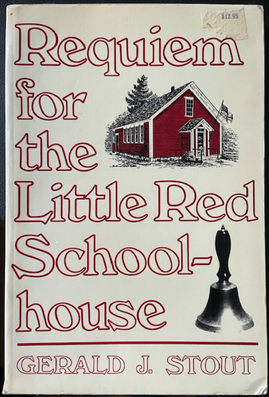 The Little Red Schoolhouse: Why? You find countless references to the Little Red Schoolhouse as preserved museums, in history, literature and lore. A web search of Little Red Schoolhouse yields hundreds of photos of little red schoolhouses. The reference is vivid, conjuring our image of what people imagine as the typical one-room school. However, we know that country schools were built of logs, brick, stone, wooden clapboard, adobe and sod, painted white, yellow, green, blue or often left unpainted. The question may be asked....why were so many painted red? One interesting explanation came to us as a reply to our YouTube video, "One-Room Schools of the Past." The writer commented: "A lot of schools were red in color for the same reason a lot of barns were red: because the railway companies would carry their own red paint to paint the cars, signs and cabooses of the trains on the rails across North America. The trains would carry so much of this "Red Lead" (lead oxide) paint that it was not only cheap, but readily available all along the railways (other paints were not so cheap or available). In the 1800s, "white paint" was mostly lime, chalk and water (whitewash), that would last a year at best on exterior surfaces. The other alternative was white paint made from white lead (lead carbonate) and boiled linseed oil, which was more expensive and less available than the railroad's red lead paint. From-Ronray.com ( site no longer available) Another informative answer to the question comes from a book entitled, "Requiem for the Little Red Schoolhouse," by Gerald J. Stout. I quote the passages below in the hope that you scout out an edition of his 1987 paperback that is rich in information about the country schoolhouse experience. The book was published by Athol Press. “Why red? The original pioneer schools, those which were built of hewn logs with cracks plastered with clay, were not painted at all... It was not until men began building houses, barns and schoolhouses of sawed boards, most commonly placed vertically and the joints covered with battens, that they began painting them to give color and protect wood from the ravages of time. Most old-timers of northeastern United States remember from their grandfathers that little red schoolhouses were as common as red barns, at least wherever they chose to paint them at all. Yet by my time, our Evans School was painted white as was the nearby school, White Dove, where my mother went to school back in the 1880's. The red schoolhouse era must go back to about Civil War time or shortly after log buildings were phased out and sawed weatherboard siding came into vogue. We have no direct evidence about the red color other than what took place with respect to farm barns, especially in eastern Pennsylvania. In that region the red barn is still common, even on modern farms where board fences and homes, unless made of brick are almost always painted white. In early days there was no scarcity of iron ore even in quite early days and relics of old iron furnaces are preserved in many places of Pennsylvania. When iron ore- or iron oxide- was ground fine, it could be used as pigment generally called venetian red. This was the inexpensive red coloring used in barn paint. One "vehicle" (liquid) into which iron oxide pigment was mixed was none other than buttermilk. The casein served in the same way it does in so-called water based paints of today. Eventually the United States obtained its own lead supply (rather than importing it) and the price dropped accordingly so white lead (lead oxide) could be used for painting the Cape Cod cottages of New England and farmhouses elsewhere. The most logical reason to explain why in later years schoolhouses came to be painted white rather than red, after white paint became cheap, is the idea that a schoolhouse should be painted like a house- it didn't seem quite right to paint a school like a barn." .....Gerald Stout NOTE: This article is a reprint from our original CSAA newsletter, but with added commentary. Stout's book is nearly impossible to find on-line anymore. Let us know if you get lucky!
Back from the Brink in Boxford, Massachusetts
The Palmer School, also known as the District No. 2 Schoolhouse, is a historic 19th-century one-room schoolhouse is in recovery! Knowing that it takes a village, schoolhouse enthusiast Laurie Rowen saw beyond the sad little relic and envisioned a community project to resurrect a once proud "Citadel of Learning." That project has been underway since right before COVID hit. The schoolhouse in Boxford, Massachusetts is a single-story wood frame structure with a gabled roof. District #2 has very minimal Greek Revival styling reflective of its construction date in 1845. It was used until 1967 as a schoolhouse. Since then it had been left to the elements and cried out for restoration. CSAA member, Laurie Rowen, was determined to save the school for the children of Boxford where they would learn about the early history from 1845 - 1931. Like most of us restoring or maintaining country schools, she was perplexed as to where to begin, but that did not deter her. Laurie and friends created the Friends of the Boxford Little Red Schoolhouse and they dove right in to the long commitment ahead to save District #2. They did their homework contacting town officials and locals who could volunteer their expertise and their elbow grease to make a dream come true. Laurie explains: When I retired from teaching, a committee of like-minded individuals was formed and we have been making progress!! We were so fortunate to have the Essex North Shore Agricultural and Technical School agree to accept the little red schoolhouse as one of its Community Projects. Through their Construction Academy, the restoration of the Palmer Schoolhouse provided the students with authentic work experiences. Under the supervision of a teacher/licensed tradesperson, they have performed the carpentry, electrical, masonry and demolition work required to restore the building with the town providing the materials. Humbly, the FBLRS gives much credit to others and downplays their hours of dreaming, planning, contacting, coordinating, fund-raising, grant writing, and searching for artifacts! That IS the story of preservationists across the country. The proof is in the unveiling, the day the dreamers invite the community for the grand re-opening of a historic schoolhouse, sharing the history of our first public schools. You can witness the progress to date and visit the FBLRS website to learn how the Town of Boxford, Massachusetts voted unanimously to allocate funds for a design of the restoration. From there the support grew and the results are astounding! The photos help tell the story....a story of collaboration and support. There is nothing more contagious than enthusiasm! CSAA lauds the efforts of Boxford, Massachusetts and the Friends of the Boxford Little Red Schoolhouse! Click on the pictures to enlarge... Your Guide to a Potential U.S. Schoolhouse Postage Stamp!
Here's a thought. Don't you think it's about time we apply to honor our nation's first public schools, our very schoolhouses, on a United States Postage Stamp? Last year I visited the Spellman Museum of Stamps and Postal History in Weston, Massachusetts situated on the campus of Regis College. It's one of only two museums in the country dedicated to U.S. postage stamps and collecting. The other and larger museum is The National Postal Museum in Washington, DC. I asked the very knowledgable docent if he ever remembered a stamp dedicated to "one-room" or "country schools." He was stumped! He had been collecting stamps or curating the museum for decades and has handled millions of stamps. He thought NOT. The existence of such stamps can be researched, but I got sidetracked since my visit and it sits on my To Do list. Thought for the day....CSAA will be the perfect organization to initiate the process and it's not that complicated! We touched on the subject back in 2019 and then COVID hit (always COVID!). Attached you'll find the CREATING U.S. POSTAGE STAMPS digital guide while we generate interest in such a project with renewed vigor. The process can take almost three years from approval to issuance, so we will exercise patience. Criteria: America or American related subjects. Subject has significant positive impact on American history, society, culture, or environment. (WOW! That's us!) Widespread national appeal.(Everyone goes to school!) Interested parties must submit the idea and the narrative on why, but the Postal Service commissions the artists. Applicants are allowed to submit"samples" in print form, but cannot submit artwork or photos for SPECIFIC consideration as a stamp. CSAA could solicit the best schoolhouse photos of our CSAA members as "samples." A wonderful honor! Quite an interesting process. Check out the guide below. Kansas City Museum an 1856 Treasure Trove of Schoolhouse Artifacts
by Susan Fineman Must See Arabia! Sounds like an odd title, doesn't it? I'll explain. In schoolhouse preservation we are always seeking useful relics of education to lend authenticity to our restored schools. Books, slates, lunch pails, inkwells...we search out these items in antique shops, on eBay, and through thoughtful donors. We often spy a treasure and think how lucky we are to find that schoolhouse artifact held by small hands of the past. Such items are also fun to see in museums, preserved for the ages. The Arabia Museum in Kansas City, MO houses countless schoolhouse treasures that "fortunately" never made it their intended destinations, trading posts and mercantiles of the emerging west. They were lost for generations after the packboat on which they were loaded sank, the victim of a snag (tree trunks floating at high speeds like missiles). The Arabia submerged into the Missouri River for 132 years while silt piled up covering the boat with the changing riverbank. The Arabia faded into history. It was later discovered by thoughtful treasure hunters who excavated the boat and thankfully preserved its contents to amaze 21st century visitors. Having been there twice, I can attest to the fascinating and magnetic displays that capture the imagination and keep us coming back. Tens of thousands of items from daily life in 1856 are on display including schoolhouse artifacts we quietly covet. Prepare to spend hours at The Arabia Museum...but, there is more to come. These treasure hunters have presumably located another river boat, The Malta (1841), and now dream of a National Steamboat Museum for the future. Please do not miss this museum if you have travel plans near Kansas City. But for now, enjoy the photos below of schoolhouse artifacts resurrected from the Arabia. Let me quote the website for brevity: THE ARABIA STEAMBOAT MUSEUM A popular Kansas City attraction for more than 25 years When the mighty Steamboat Arabia sank near Kansas City on September 5, 1856, she carried 200 tons of mystery cargo. Lost for 132 years, its recovery in 1988 was like finding the King Tut’s Tomb of the Missouri River. The discovery was truly a modern day treasure-hunting story at its best. The artifacts are preserved and displayed at the Arabia Steamboat Museum, located in the historic City Market. From clothing, fine china and carpentry tools to guns, dishes and children’s toys to the world’s oldest pickles—the collection captivates visitors of all ages. Whether it’s your first visit to this favorite Kansas City attraction or you come every year, the treasures of the Steamboat Arabia will connect you to American history in a new and exciting way. Access the website for everything you need to know below! Watch the promo video.... "I Love the World" Valentine Card and Letter Campaign
CSAA Board Member Mary Outlaw and Senior Lecturer Emerita at Berry College in Rome, Georgia received a sweet request (below) from one of her graduates. You could join the fun and make these special students very happy! I'll wager Mary will give The Report Card an update on the results of this social media blitz. Let's help out. My classroom is doing a project called “I Love the World”. We would love it if we could receive a Valentine from each state, which could be in the form of a Valentine, postcard or letter. This is a big goal but with your help and social media we know it is possible. We have a digital US map that we will be adding a heart to each state as we receive Valentines. The students have their own map that they will color in the corresponding state as we receive the Valentines. We will be keeping count of which states we get the most Valentines from, as well as learning new vocabulary about Valentine’s Day. Please send your mail to the address below: Mrs. Fields’ and Mrs. Romero’s Class East Central Elementary 1502 Dean Avenue Rome, GA 30161 We will be eagerly awaiting the mail delivery each day. Thank you for all your help!! National Handwriting Day is January 23, 2024
When we study our schoolhouse documents of the past we are in awe of the beautiful and flowing scripts exhibited in their handwriting and wish we could duplicate those efforts. Do you bemoan the loss of penmanship skills? Have your local schools abandoned the practice of cursive writing? National Handwriting Day was established to raise awareness of the many benefits of handwriting, a.k.a. cursive writing and may even succeed in returning this skill to the classroom. The many upsides of handwriting have been published in countless articles and books, but one infographic can state the case very clearly and visually. Pens.com has invited their patrons to share this infographic with readers who might be interested in those bullet points. Sounds reasonable to me! Note: This infographic is longer than usual, but keep scrolling down. 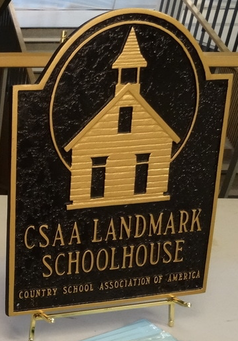 Recognize Your Country School with a Marker The good news is that the CSAA Schoolhouse Registry continues to add honorees to our roll! Schoolhouses in 22 states are currently represented by our beautiful registry markers with more applying. The recognition is not only from our organization, but the groups who have restored or preserved their schoolhouses display their markers to the delight of their visitors and community. The marker speaks loudly that a preserved schoolhouse has contributed in some positive way to the appreciation and understanding of the country school experience and its unique architectural and historical heritage. Anyone who is actively involved with a schoolhouse or visits one knows of the vital role played by country schools in the establishment of our public school system and the desire of the community to produce literate. moral, and patriotic American citizens. This is a history we dare not lose. It is a history we must promote more than ever in times of rapid change in education. Please consider applying for your marker (if you don't already have one) and join us in recognizing the contribution of our forefathers for building 220,000+ one-room schools and our preservationists for saving and sharing a schoolhouse. REQUEST: CSAA would like to add to our gallery of photos of CSAA Schoolhouse Registry Schools and their sponsors on our website. If you would share a photo of your schoolhouse or marker and where you located it, that would be nice too. We look forward to seeing you! Please send those along to Susan Fineman at [email protected] with identification. THANKS!!! Ideas Galore for Schoolhouse Reenactment! Does your country schoolhouse welcome school field trips? Do you have a curriculum you would care to share with groups seeking ideas? Nationwide, programs are alive and well offering the experience of teaching in and attending our restored one-room schools. Dedicated volunteers don period clothing to stage re-enactments and living history classes for our young visitors and enthusiastic adult groups as well. Schoolmarms and schoolmasters share their knowledge of country schooling in the most endearing settings, our schoolhouses, meticulously restored with furniture, artifacts, and a curriculum crafted by those same volunteers. Does this describe you? Welcome is the news that there are still groups restoring a schoolhouse whose goal is to serve local school children and help them step back into history. But, they ask...Where two we start? This question was posed to us recently by the Merrimack Historical Society in Merrimack, NH. They already own a beautiful one-room schoolhouse, but they are planning a new direction by offering regular living history classes. They are seeking ideas. We will offer here for Merrimack, other seekers, and for our readers, a perfect guide for programming. Here are scores of ideas for your schoolhouse created by CSAA member, Susan Webb. It is a narrated video slide show she submitted for our 2021 CSAA Virtual Conference line-up and it is filled with resources. CSAA's Susan Webb, "The Traveling Schoolmarm," was a master at such hands-on activities and she shared her passion for reenactment at many of our annual conferences and to historic groups across the country. Sadly, Susan passed away in October 2023, but we honor her memory, knowledge, and creativity once more by sharing Using the Ten R's (of Reenactment) as she would have wished. Note: If you have a written curriculum you'd like to share with others, send it along to Susan Fineman (with our gratitude) and we will make it available to individuals seeking ideas. [email protected] We will post your contribution on the CSAA Resources Page. CSAA Member Re-Launches Award Winning Series
with New Illustrations by Pattie HartNaus I’m proud to announce the relaunch in 2024 of the multi-award winning Belden Boy, an anti-bullying series for children that was tied to the discovery of a deserted one-room schoolhouse in the driftless area many years ago. Why a relaunch? Well, let me begin by saying that this was a passion journey for me, beginning with the reading of the Laura Ingalls Wilder stories from my childhood. The books were given to me in the 1960s as a gift by my grandma, stories that made me long for living in a log cabin in the woods and going to a one-room school in the 1800s. My love for all things that resembled a rustic and simpler life helped to shape the person I would become. When I was completing my Masters Class in Education in 2003, I was asked ironically to help save the old 1859 Belden School as my last assignment. I couldn’t have dreamed of a more perfect project than to restore a one-room school. I was given two old journals of Belden from 1871 and 1923, that were retrieved from the garbage by a local farmer. I was also given the names of a few elderly students who happened to be part of the class that closed the school in 1943 to consolidation. I spoke with these folks who happened to have stories of going to school in the day; stories that could make you smile, laugh, and even bring a tear to your eye. I recorded those stories and made the Belden students a promise that I would save and record everything that I scribed. I did just that. This was the beginning of a journey in writing the Belden Boy Series. I came to know my characters as if they were friends: “Peter McDugal is a boy who is shy, quiet and does what he knows is right. His pal, Franky, is very much the opposite. He comes from a family who is down and out, only child to a sick mother and a failed famer who just doesn’t care. Franky runs through the woods each day, doing what he pleases, and goes to school only if he feels like it. He bullies anyone and everyone, especially his pal Peter. Miss Bishop is a kind and caring teacher who tries her best to talk to the boys about their friendship. But as time moves on, so does she. A new schoolmaster comes to the community. He butts heads with Franky as he is a bully, as well. Then comes Annie. A young girl who travels down from Minnesota with her Pa to the Belden community to live with her Grandpa who is ‘soft in the head’, as they say. She and her pa help the old man until his dying day, but during those days, Franky comes to call. It’s true that Annie suffers from a disability, but that doesn’t keep her down. Her character is strong and intends to do what she can to help the boys. Annie introduces Grandpa to Franky, who intrigues the boy, and teaches him a thing or two about life during the ‘War Between the States’, serving alongside Ulysses S. Grant. Franky and Peter are in awe of the old man and his stories, and smitten with their new friend Annie.” Each of the four books in the Belden Boy series is told in first person from a different character: victim Peter McDugal in the first two books, Franky, the bully, in the third book, and the girl bystander, Annie, in the fourth book. Series is tied to Common Core State Standards for perspective and figurative language. So, it’s time to relaunch my old friends in the series Belden Boy, giving them new life with a new look. For me, the stories are a celebration of all the things I loved as a child especially, one-room schools. Let the relaunch begin January 2024! ~P. J. HarteNaus Whistleslick Press LLC www.whistleslickpress.com NOTE: Pattie HartNaus has been a regular contributor at our annual CSA Country School Conferences and has presented a number of topics including the restoration of the Belden School featured in her series. She has also offered a program on how to hold a successful Summer Writing Camp for children in your country school. . Pattie has received two Scholarship and Artistry Awards from CSAA for her fine work covering social issues, but set in a one-room country school. The same issues will resonate today with our young readers. Access her website below for more information! Will You Present a Program in Toledo?
It's quite amazing when local and national news outlets highlight the major events of the past year and pay tribute to the notables who have passed away in 2023. Often we say, "Oh, no...how did I miss that one?" We're busy tending to our own lives, families, jobs and activities. As we enter 2024 with health and hope we have many things to look forward to at CSAA and you're invited to participate! Think about attending or presenting at the CSAA Conference at the University of Toledo June 9-12, 2024. The deadline for Proposals for Presentations is January 31, 2024. Submit your proposal and you will be notified of acceptance by February 15th. You all have something of interest to say about country schools, preservation, restoration, programming or history. Share it in Toledo! Since CSAA began holding conferences there have been no repeat presentations because everyone who offers a program brings a new perspective to a historic topic...Country Schools. We can accommodate your method of presentation with UT's technology...video, Power Point presentations, music, sound, and/or display. Meet new friends who share your passion for one-room schools. We're like-minded people. Take the coach tour on Wednesday and visit preserved country schools. It's a great time with really nice people who are knowledgeable in countless areas of schoolhouse preservation. So, what are you waiting for? Remember JANUARY 31st IS THE DEADLINE, so you don't have to ask yourself..."How did I miss that one? HAPPY NEW YEAR FROM CSAA! Restoring the Santa Rosa Schoolhouse in Cambria, California
If you missed our 2021 Virtual Conference, you can now enjoy this inspirational video of the restoration and preservation of the Santa Rosa Schoolhouse which we aired for our attendees. The work there is on-going and you will be treated to updates in the progress of this restoration. The documentary video, “Santa Rosa One-Room School—Waltzing Back in Time,” is written and presented by CSAA Member, Debbie Soto. The filming and production credit for this video goes to Kyle Plummer of Super Image, Ltd. This video highlights the history and stories of the former Santa Rosa School near Cambria, California which is now in the possession of the Cambria Historical Society. Debbie said, "We all are blessed that the Santa Rosa Schoolhouse has survived through the passage of time to be an example of that era. The 140 year old building is in the process of being restored to its former glory to be a beacon of light to future generations. The former one-room schools of the past across America should have a place of honor and respect as they were the edifices of early education in our country. This education included more than the 3 R’s—‘readin’, ‘ritin,’ and ‘rithmitic. The students learned independence, wisdom, work ethic, and dappled in the arts with their homespun plays and recitals. This video was produced to give others a taste of what it was like to attend a small, intimate and friendly school." CSAA appreciates everything our members do on behalf of schoolhouses across the country. Our volunteerism is necessary for their continued existence. Be sure to visit the Cambria Historical Society at www.cambriahistoricalsociety.com home of the Santa Rosa Schoolhouse . . Click on the photo below to access the Video Presentation...Enjoy! 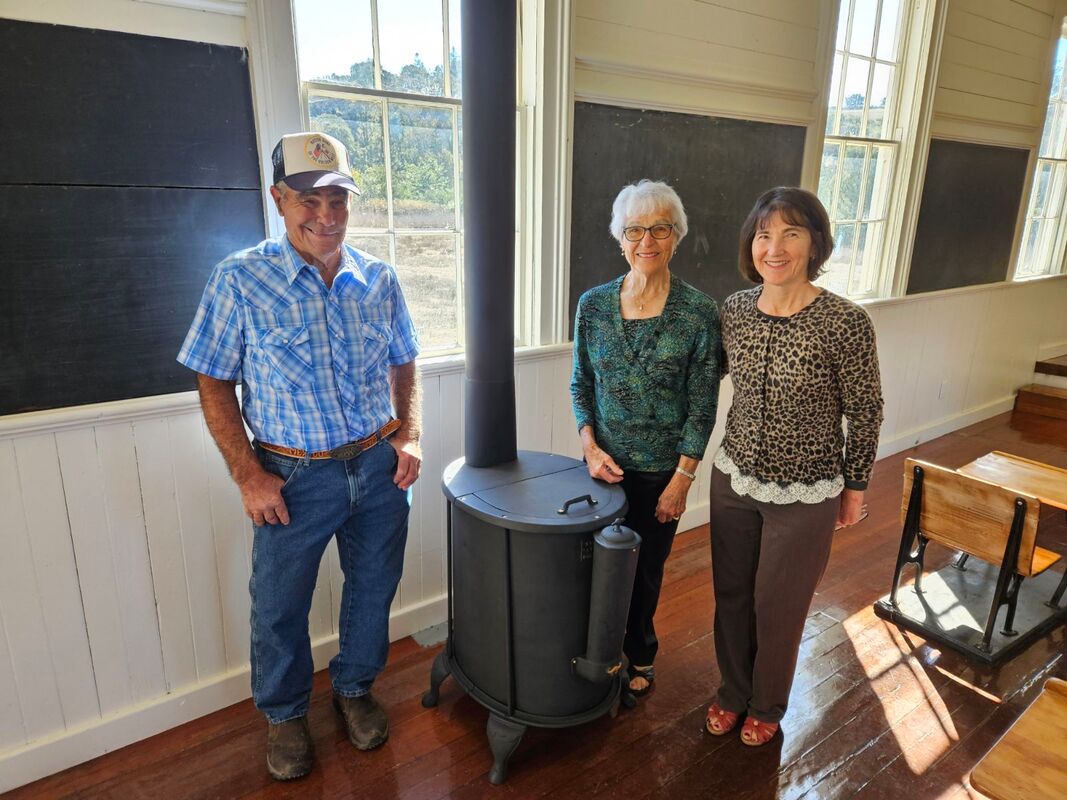 Olie Fiscalini, left, Kathleen Fiscalini Gerhardt and her daughter Debbie Soto proud of restored stove Olie Fiscalini, left, Kathleen Fiscalini Gerhardt and her daughter Debbie Soto proud of restored stove Original Stove Finds its Way Back to Its Schoolhouse Submitted by Debbie Soto Restoring our country schools is an arduous task and we scour antique stores to furnish our museums in the style of days gone by. Sometimes we get lucky and find original artifacts that were actually connected to the schoolhouse itself. Here, CSAA member Debbie Soto, shares a unique story of one such forgotten stove... ...An antique rusty woodstove from the 1880s was stored away in an old farm shed after being removed from the Santa Rosa schoolhouse in the 1940s. It was replaced with a more efficient oil burning heater to keep students warm. The old woodstove was overlooked and forgotten for almost 80 years when a little known family tip was revealed. Debbie’s uncle, Olie Fiscalini, told her that he still had the woodstove in his shed. His father, Olimpio Fiscalini Sr., had put it in the shed years earlier and it set there ever since. The stove was buried under years of debris and other junk. With this newly discovered tidbit, everyone was energized to have the stove restored and placed back into the schoolroom. The community rallied together and two young men, Brian and Paul Snow, with ties to the schoolhouse, offered to restore the stove as a gift. They spent many weekends and after hours from their busy jobs to complete this project. Now the stove is back where it belongs looking as new as it did more than 140 years ago when the schoolhouse and stove were brand new. Hallelujah! Miracles still happen! You'll definitely want to read "the rest of the story..." so, access this link! 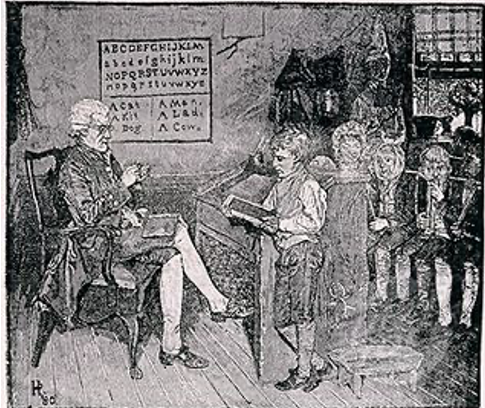 The Schoolmaster's Electronic Bookshelf by Mike Day (Re-print) The concept of teacher education (at least here in America) dates to the early 1840's with the establishment of the first "Normal Schools", a term derived from the French "Ecole Normal." As applied to a school for teachers the word "normal" meant an institution where correct standards or "norms" were taught, and where the art of teaching was demonstrated in correct practice. Massachusetts established first Normal School at Lexington with three students on July 3, 1839. New York established one in 1844 and Connecticut followed in May 1850. In addition to formal academic preparation, there was a strong movement towards Teachers Conventions at which the newer approaches were introduced and discussed. But such formal training tended to be limited to teachers in the settled and urbanized areas. For those in more isolated situations, self-education was often the only option. A number of periodicals for teachers also appeared, most being published by the various State Departments of Education. These provided support and encouragement, instruction in specific aspects of teaching, and recommendations regarding professional books that teachers should read. The books could be ordered by mail, so that even in the most out-of-the-way settlements, dedicated teachers could keep up with the developments in their field. The bookshelf of a committed teacher would contain some or all of the following titles: School Architecture: or Contributions to the Improvement of School-houses, Henry Barnard, New York, 1848 Confessions of a School Master, William A. Alcott, New York, 1839 The Teacher's Manual, Thomas H. Palmer, Boston, 1840 Lectures on School-Keeping, Samuel Hall, Boston, 1832 The Teacher Taught; or The Principals and Modes of Teaching, Emerson Davis,1839 Lectures to Female Teachers on School-Keeping, Samuel Hall, Boston, 1832 The School-Master's Friend, With the Committee-Man's Guide, Theodore Dwight, Jr., New York, 1835 Essay on the Construction of School-Houses, William Alcott, Boston 1832 Slate And Black Board Exercises, William Alcott, New York, 1843 The Teacher Taught, Emerson Davis, Boston, 1839 The Teacher's Manual, Thomas H. Palmer, Boston, 1840 The School And School-Master, Alonzo Potter, New York, 1842 How Shall I Govern My School ?, E. C. Wines, Philadelphia, 1838 Lectures On Education, Horace Mann, Boston, 1845 Many more could be listed. These books contain much that is relevant to good teaching even today. Museum people who peruse them get to share in the thinking that motivated 19th century teachers, and secure a first-hand look into the day-to-day workings of their schools. It’s worth your time to take a look. Accessing An Electronic Treasure While you could scour the country's research libraries in search of original copies, a much easier approach is available to you through your computer. All of the books listed above are available to you at no cost through Google books. Clear images of the original publications can be downloaded to your computer or other electronic reader whenever you want them. To gain access, first go to the site: GOOGLE BOOKS . When the main page opens, there will be a search box under it. In this window type the name of the book you want, and click on the magnifying glass. A list of sites will be presented that offers access to that book. The listing will usually indicate where and when it was published. Look for the notation "READ” under the title and click on that. The book will open and you can read it by scrolling down. You can browse through the book, print a copy or save it for later. It’s a modern electronic version of the school-master’s bookshelf. And just as the originals helped frontier teachers do a better job in their one room school-houses, the electronic versions can help you to be a more informed interpreter in your restored school-house. Note: Mike Day was a regular contributor to the CSAA newsletter during its years of publication and the owner of Clippership Publications. We continue to seek Mike out to find out where he retired. |
Our early public schools systems were indeed disparate, but a common thread among early districts was that children of all ages were taught together in the one-room schoolhouse" Blog Archives
July 2024
|

